by Eric Meier
When attempting to identify a wood sample, it’s important to keep in mind the limitations and obstacles that are present in our task. Before starting, please have a look at The Truth Behind Wood Identification to approach the task in a proper mindset; I consider the linked article to be required reading for all those visiting my site with the intent of identifying wood.
1. Confirm it is actually solid wood.
Before proceeding too much farther into the remaining steps, it’s first necessary to confirm that the material in question is actually a solid piece of wood, and not a man-made composite or piece of plastic made to imitate wood.
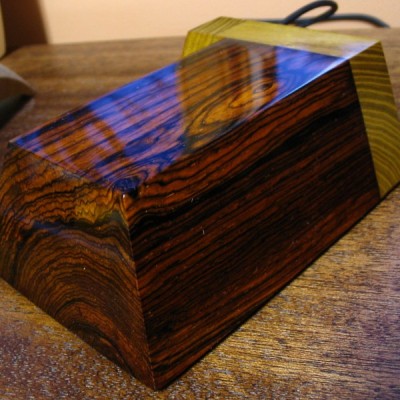
Can you see the end-grain?
Manufactured wood such as MDF, OSB, and particleboard all have a distinct look that is—in nearly all cases—easily distinguishable from the endgrain of real wood. Look for growth rings—formed by the yearly growth of a tree—which will be a dead-giveaway that the wood sample in question is a solid, genuine chunk of wood taken from a tree.
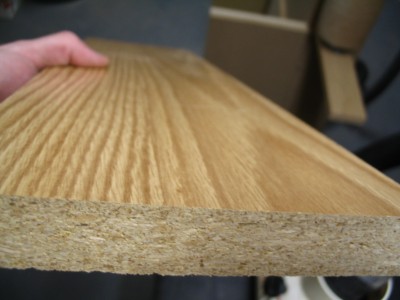
Is it veneered?
If you see a large panel that has a repeating grain pattern, it may be a veneer. In such cases, a very thin layer of real wood is peeled from a tree and attached to a substrate; sometimes the veneer can be one continuous repeating piece because it is rotary-sliced to shave off the veneer layer as the tree trunk is spun by machines. Assuming it is a real wood veneer with a distinct grain and texture—and not merely a piece of printed plastic—you may still be able to identify the outer veneer wood in question, but you should still realize that is it only a veneer and not a solid piece of wood.
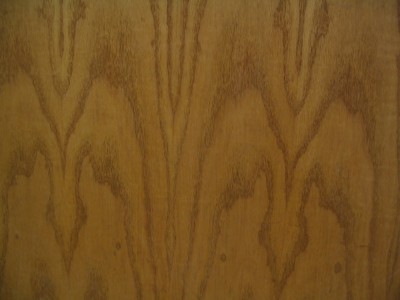
Is it painted or printed to look like wood?
Many times, especially on medium to large-sized flat panels for furniture, a piece of particleboard or MDF is either laminated with a piece of wood-colored plastic, or simply painted to look like wood grain. Many of today’s interior hardwood flooring planks are good examples of these pseudo-wood products: they are essentially a man-made material made of sawdust, glues, resins, and durable plastics.
2. Look at the color.
Some questions to immediately ask yourself:
Is the color of the wood natural, or is it stained?
If there is even a chance that the color isn’t natural, the odds are increased that the entire effort of identifying the wood will be in vain.
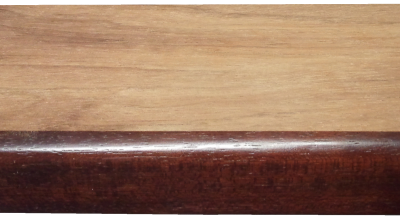
Is it weathered or have a patina?
Many woods, when left outside in the elements, tend to turn a bland gray color. Also, even interior wood also takes on a patina as it ages: some woods get darker, or redder, and some even get lighter or lose their color; but for the most part, wood tends to darken with age.
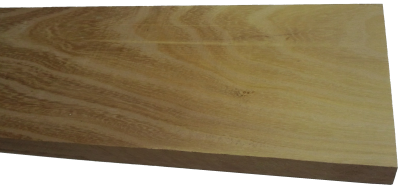
Is it possible to sand or plane the board to see the natural raw color of the wood?
The most predictable baseline to use when identifying wood is in a freshly sanded state. This eliminates the chances of a stain or natural aging skewing the color diagnosis of the wood.
3. Observe the wood grain.
If the wood is unfinished, then look at the texture of the grain. Ask yourself these questions:
Does the wood have an open, porous texture?
Most softwoods will be almost perfectly smooth with no grain indentations, while many common hardwoods have an open pore structure, such as oak or mahogany; though there are some hardwoods that are also smooth to the touch, such as maple.
Can you tell if the wood is quartersawn or plainsawn?
By observing the grain patterns, many times you can tell how the board was cut from the tree. Some wood species have dramatically different grain patterns from plainsawn to quartersawn surfaces. For instance, on their quartersawn surfaces, lacewood has large lace patterns, oak has flecks, and maple has the characteristic “butcher block” appearance.
Is there any figure or unusual characteristics, such as sapwood, curly or wild grain, burl/knots, etc.?
Some species of wood have figure that is much more common than in other species: for example, curly figure is fairly common in soft maple, and the curls are usually well-pronounced and close together. Yet when birch or cherry has a curly grain, it is more often much less pronounced, and the curls are spaced farther apart.
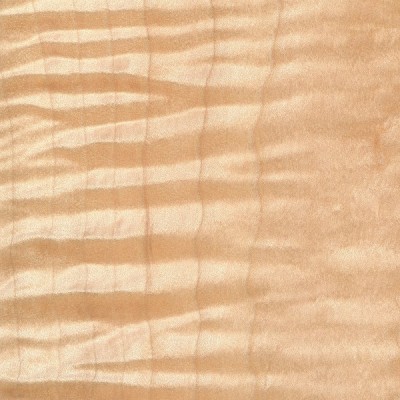
4. Consider the weight and hardness of the wood.
If it’s possible, pick the piece of wood up and get a sense of its weight, and compare it to other known wood species. Try gouging the edge with your fingernail to get a sense of its hardness. If you have a scale, you can take measurements of the length, width, and thickness of the wood, and combine them to find the density of the wood. This can be helpful to compare to other density readings found in the database. When examining the wood in question, compare it to other known wood species, and ask yourself these questions:
Is the wood dry?
Wood from freshly felled trees, or wood that has been stored in an extremely humid environment will have very high moisture contents. In some freshly sawn pieces, moisture could account for over half of the wood’s total weight! Likewise, wood that has been stored in extremely dry conditions of less than 25% relative humidity will most likely feel lighter than average.
How does the wood’s weight compare to other species?
Taking into account the size of the board, how does its weight compare to other benchmark woods? Is it heavier than oak? Is it lighter than pine? Look at the weight numbers for a few wood species that are close to yours, and get a ballpark estimate of its weight.
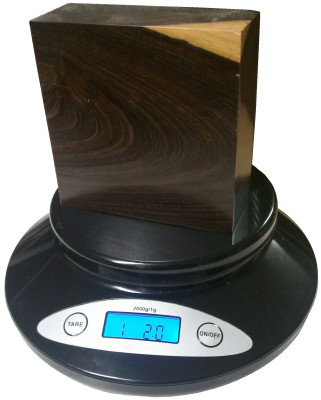
How hard is the wood?
Obviously softwoods will tend to be softer than hardwoods, but try to get a sense of how it compares to other known woods. Density and hardness are closely related, so if the wood is heavy, it will most likely be hard too. If the wood is a part of a finished item that you can’t adequately weigh, you might be able to test the hardness by gouging it in an inconspicuous area. Also, if it is used in a piece of furniture, such as a tabletop, a general idea of its hardness can be assessed by the number and depth of the gouges/dings in the piece given its age and use. A tabletop made of pine will have much deeper dents than a tabletop made of Oak. Additionally, you can always try the “fingernail test” as a rough hardness indicator: find a crisp edge of the wood, and with your fingernail try to push in as hard as you can and see if you’re able to make a dent in the wood.
5. Consider its history.
Many times we forget common sense and logic when attempting to identify wood. If you’ve got a piece of Amish furniture from Pennsylvania, chances are more likely that the wood will be made of something like black walnut or cherry, and not African wenge or jatoba. You might call it “wood profiling,” but sometimes it can pay to be a little prejudiced when it comes to wood identification. Some common-sense questions to ask yourself when trying to identify a piece of wood:
Where did it come from?
Knowing as much as you can about the source of the wood—even the smallest details—can be helpful. If the wood came from a wood pile or a lumber mill where all the pieces were from trees processed locally, then the potential species are immediately limited. If the wood came from a builder of antique furniture, or a boat-builder, or a trim carpenter: each of these occupations will tend to use certain species of woods much more often than others, making a logical guess much simpler.
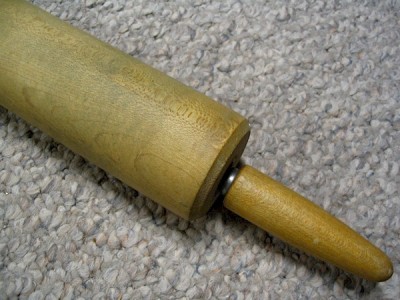
How old is it?
As with the wood’s source, its age will also help in identification purposes. Not only will it help to determine if the wood should have developed a natural patina, but it will also suggest certain species which were more prevalent at different times in history. For instance, many acoustic guitars made before the 1990s have featured Brazilian rosewood backs/sides, yet due to CITES restrictions placed upon that species, East Indian rosewood became a much more common species on newer guitars. (And this is a continuing shift as newer replacements are sought for rosewoods altogether.)
How large is the piece of wood?
Some species of trees are typically very small—some are even considered shrubs—while others get quite large. For instance, if you see a large panel or section of wood that’s entirely black, chances are it’s either painted, dyed, or stained: Gaboon ebony and related species are typically very small and very expensive.
What is the wood’s intended use?
Simply knowing what the wood was intended for—when considered in conjunction with where it came from and how old it is—can give you many clues to help identify it. In some applications, certain wood species are used much more frequently than others, so that you can make an educated guess as to the species of the wood based upon the application where it was used. For instance, in the United States: many older houses with solid hardwood floors have commonly used either red oak or hard maple; many antique furniture pieces have featured quartersawn white oak; many violins have spruce tops; many closet items used aromatic red cedar, and so forth. While it’s not a 100% guarantee, “profiling” the wood in question will help reduce the number of possible suspects, and aid in deducing the correct species.
6. Find the X-Factor.
Sometimes, after all the normal characteristics of a sample have been considered, the identity of the wood in question is still not apparent. In these instances—particularly in situations where a sample has been narrowed down to only a few possible remaining choices—it’s sometimes helpful to bring in specialized tests and other narrower means of identification.
The following techniques and recommendations don’t necessarily have a wide application in initially sorting out wood species and eliminating large swaths of wood species, but will most likely be of use only as a final step in special identification circumstances.
Odor
Believe it or not, freshly machined wood can have a very identifiable scent. When your eyes and hands can’t quite get a definitive answer, sometimes your nose can. Assuming there is no stain, finish, or preservative on or in the wood, quickly sand, saw, or otherwise machine a section of the wood in question, and take a whiff of the aroma.
Although new scents can be very difficult to express in words, many times the scent of an unknown wood may be similar to other known scents. For instance, rosewoods (Dalbergia spp.) are so named for their characteristic odor that is reminiscent of roses. Although difficult to directly communicate, with enough firsthand experience scents can become a memorable and powerful means of wood identification.
Fluorescence
While certain woods can appear basically identical to one another under normal lighting conditions, when exposed to certain wavelengths—such as those found in blacklights—the wood will absorb and emit light in a different (visible) wavelength. This phenomenon is known as fluorescence, and certain woods can be distinguished by the presence or absence of their fluorescent qualities. See the article Fluorescence: A Secret Weapon in Wood Identification for more information.
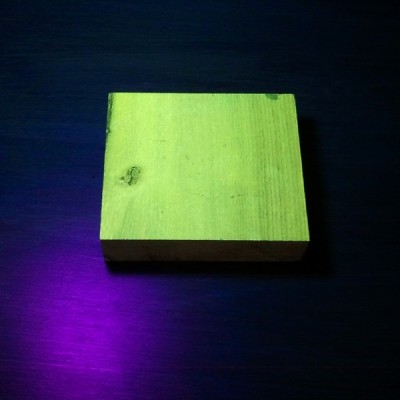
Chemical Testing
There are only a small number of chemical tests regularly used on wood, most of which are very specialized and were developed to help distinguish easily confused species with one another. They work by detecting differences in the composition of heartwood extractives. A chemical substance (called a reagent) is usually dissolved in water and applied to the wood surface: the surface is then observed for any type of chemical reaction (and accompanying color change) that may occur. Two of the most useful are the tests that are meant to separate Red and White Oak, and Red and Hard Maple.
Heartwood Extractives Leachability
Sometimes a wood species will have heartwood extractives that will be readily leachable in water and capable of conspicuously tinting a solution of water a specific color. For instance, the heartwood extractives contained in osage orange (Maclura pomifera) contain a yellowish-brown dye that is soluble in water. (This can sometimes be observed anecdotally when the wood is glued with a water-based adhesive: the glue’s squeeze-out is an unusually vibrant yellow.)
In a simple water extract color test, wood shavings are mixed with water in a vial, test tube, or other suitably small container, and the color of the water is observed after a few minutes. If the heartwood extractives are leachable by water, then a corresponding color change should quickly occur.
In addition to osage orange (Maclura pomifera), merbau (Intsia spp.), and rengas (Gluta spp. and Melanorrhoea spp.) are also noted for their readily leachable heartwood extractives. Because this property is quite uncommon, it can serve to quickly differentiate these woods from other lookalikes.
7. Look at the endgrain.
Perhaps no other technique for accurate identification of wood is as helpful and conclusive as the magnified examination of the endgrain. Frequently, it brings the identification process from a mostly intuitive, unscientific process into a predictable, repeatable, and reliable procedure.
Looking at the endgrain with a magnifier shouldn’t be a mystifying or esoteric art. In many cases, it’s nearly as simple as examining small newsprint under a magnifying glass. There are three components necessary to reap the full benefits contained in the endgrain:
I. A prepared surface.
When working with wood in most capacities, it becomes quickly apparent that endgrain surfaces are not nearly as cooperative or as easily worked as face grain surfaces. However, in this case, it is absolutely critical that a clear and refined endgrain surface is obtained.
For a quick glance of a softwood sample, a very sharp knife or razor blade can be used to take a fresh slice from the endgrain. However, in many denser species, especially in tropical hardwoods, one of the best ways to obtain a clear endgrain view is through diligent sanding. It’s usually best to begin with a relatively smooth saw cut (as from a fine-toothed miter saw blade) and proceed through the grits, starting at around 100, and working up to at least 220 or 320 grit, preferably higher for the cleanest view.
II. The right magnifier.
It need not be expensive, but whatever tool is used to view the endgrain should have adequate magnifying power. In most instances, 10x magnification is ideal, however, anything within the range of 8 to 15x magnification should be suitable for endgrain viewing. (Standard magnifying glasses are typically in the range of 2 to 4x magnification.)
These stronger magnifiers, sometimes called loupes, usually have a smaller viewing area than standard magnifying glasses. Fancier models—with built in lights, or larger viewing surfaces—are available at a premium; but the most basic models are usually only a few dollars.
III. A trained eye.
The third element that constitutes a proper endgrain examination is simply knowing what to look for. In analyzing the patterns, colors, shapes, and spacing of the various anatomical features, there is a veritable storehouse of information within the endgrain—all waiting to be unlocked. Yet, if these elements have not been pointed out and learned, the array of features will simply seem like an unintelligible jumble. The discipline of recognizing anatomical endgrain features is not easily summed up in a few sentences or even a few paragraphs, but it is nonetheless critical to the identification process. To this end, an in-depth look should be given to the various categories, divisions, and elements that constitute endgrain wood identification on the macroscopic level. (In this regard, macroscopic denotes what can be seen with a low-powered, 10x hand lens—without the aid of a microscope—rather than simply what can be seen with the naked eye.) Because the anatomy between softwoods and hardwoods is so divergent, each will be considered and examined separately:Still stumped?
If you have a mysterious piece of wood that you’d like identified, you’ve got a few options for next steps:USDA’s Forest Products Laboratory
You can mail your physical wood samples to the Center for Wood Anatomy Research.
Pros:
- Free
- Professional wood identification
Cons:
- Only available to US citizens
- Slow turnaround times (up to a month or more)
- Limited to three IDs per year
See their Wood ID Factsheet for more info.
Alden Identification Service
You can mail your physical wood samples (even small sections taken from antiques) to Alden Identification Service.
Pros:
- Professional wood identification
- Faster turnaround times (ranging from a few days to a week or two)
Cons:
- Paid service
See their ordering page for more info. (Note that Harry Alden has written several books while at USDA, including both Hardwoods and Softwoods of North America.)
Ask for help online
If the wood ID is merely a curiosity, or non-critical, you can post pictures of the wood in question.
Pros:
- Free
- No need to send physical samples
Cons:
- Greatly limited by the quality of the pictures provided
- Extra work usually required to get adequate clarity in photos
See article of Common US Hardwoods to help find the most commonly used woods.
Get the hard copy
 If you’re interested in getting all that makes The Wood Database unique distilled into a single, real-world resource, there’s the book that’s based on the website—the Amazon.com best-seller, WOOD! Identifying and Using Hundreds of Woods Worldwide. It contains many of the most popular articles found on this website, as well as hundreds of wood profiles—laid out with the same clarity and convenience of the website—packaged in a shop-friendly hardcover book.
If you’re interested in getting all that makes The Wood Database unique distilled into a single, real-world resource, there’s the book that’s based on the website—the Amazon.com best-seller, WOOD! Identifying and Using Hundreds of Woods Worldwide. It contains many of the most popular articles found on this website, as well as hundreds of wood profiles—laid out with the same clarity and convenience of the website—packaged in a shop-friendly hardcover book. 


Why I will no longer be replying to every wood ID request I’ve replied to literally thousands of wood ID requests on this site over the past 13+ years, but as the site’s popularity has grown, so has the time demands for ID on a daily basis. (Contrary to what some may seem to think, I am not some all-knowing wood wizard that can instantly ID your wood. It can actually take me a long time to sift through a lot of different resources.) Over the past few years, my backlog of pending wood species to be added to the… Read more »
Hi i need help identifying wich wood this table is made of. As far as i know, it was made in Quebec.
Here’s a picture for closer look.
And an other one.
More than likely either oak or ash, stained with a walnut-like color. The grain is ring-porous, and usually the most common wood used is oak, but I can’t really make out any ray fleck in any of the photos, which would suggest ash instead (ash has a similar grain to oak but has much less conspicuous rays).
Hi there. Just uncovered my 1920’s era bannister from under about 8 coats of white paint, and found this wood underneath. Not sure what it is. Can you help?
Can you tell me what you think this is
Last pic of dining set:
More pics of the dining set…
This part looks like sycamore.
More pics of the possibly oak dining set…
Doesn’t look like oak to me. Not sure what it is, though the drawer front appears to be a veneer of some sort.
Hi – I have a dining set that appears to have been made to order in the Midwest in the 1930’s (and shipped to San Francisco). I Always assumed it was red oak, but am really not sure. It may be oak with some other wood veneer. Various pieces of the set have been re-stained and refinished. I would love to know what you think!
HAve a look at rewarewa a NZ native species with similar spots
Dick van den Oever
There may be more than one species of wood used here. If it is confined to US species, I’d say that Sycamore is by far the most likely species.
Good day. Please forgive me if this question is a bit off topic. What are the ideal environmental ranges for storing and displaying wood articles? This would be primarily for smaller items that can be housed in a display case, and transported in sealed cases (Pelican type). I would assume that exposure to direct sunlight should be avoid, if possible. For display and exhibition purposes is there a recommended temperature and humidity range? Do you have any recommendations regarding lighting (LED, CFL, halogen, incandescent, etc). Should desiccants (silica gel) be used? Thank you very much in advance!
I’d say definitely don’t use desiccants. If anything, low humidity is much more dangerous than high. For instance, I believe there are some humidity regulators for stringed instruments like violins (forgot the name, sorry!), and they increase humidity to prevent the instrument from drying out. I’d say something like 70 degrees F and 50% relative humidity should be a good target.
Hi, I wanted to send another picture just in case you need it. Thank you!
– Mary
Hey there! Was hoping to get my wooden bookcase identified. Only background I have (given to me by my mom) is that it came from “that woman”. Other than explaining why said bookcase is now in my possession, I don’t think that’s helpful in the least. But hoping you can help regardless. Thank you!
The knots are suggestive more of a softwood like pine, but I can’t tell for sure from the picture, sorry!
Another pic of the logs might help ID
Many thanks
Hi There, very informative thank you.
I was wondering could anyone tell me what wood this is please ?
It is very dense
Believe its from Australia
many thanks
If you believe it to be from Australia, I’d guess some sort of Acacia species, possibly a type of Gidgee?
Hi Eric,
I was just given a peace of wood, I think I know what it is based on its weight and hardness, but wood like to be sure before I stick it on the lathe, safer that way.I think its Lignum Vitae, took the edge off the knife I used to scrape the wax away and really heavy, I tried to notch a spot close to the end with a chisel and took all I could muster to barely nick it
I can’t really make out any details (or even any color) under all that wax, sorry!
Can anyone tell me which wood this is? It is varnished or stained with something either clear or very light, to the eye it has more of a light golden colour than appears in the photo. I’m trying to find a matching tv unit but unsure of what type of wood to look for. Thank you.
This is a picture from further away.
I’m going to make an educated guess and say it’s rubberwood.
I think its butternut , the butter color ,used on salad bowls also!
Thank you so much for a most informative article and invaluable website. I would be most grateful if you might be able to identify the wood that this presentation case of made from. The case is 14″ x 5″. The gradation in color appears to be nature. This case has been described as walnut. Is there is any reason to believe otherwise.
Walnut seems like a reasonable ID to me.
Any chance of identifying this wood from back of headboard? Stain so dark, not a lot of detail
Thanks
Not 100% sure on the genuine ID, but I will say that at the very least, it appears to be very similar to Cherry.
Hi,
Can anyone please help me identify the type of wood in the small chest box in the links below
https://1drv.ms/i/s!AhGgHGz5iaLEpBe64CgbbFYQv8Ib
https://1drv.ms/i/s!AhGgHGz5iaLEpBbTKKmPG6LV5ySB
Thank you in advance
Looks like a tropical hardwood of some sort. Knowing the origin or place where you got it may help narrow things down.
cheers Eric, much obliged mate!
My guess was walnut but then I can only identify the very trivial/basic
I bought it here in Sydney Australia about 12-14 years ago for $10-15 AUD (1AUD = 0.76USD) in a church flea market, I’m trying to have it evaluated but the informal estimates I got so far (4) vary wildly from $60 AUD to $600 AUD so I’m a bit confused :)
Based on your location, my guess would be some type of Acacia species. Most likely candidate would be Acacia melanoxylon, known to us in the United States as “Australian Blackwood.”
thank you so much! I’ll look it up
Anyone know what kind of wood these slabs are by chance?
Could you possibly help me to identify if this is the wood or veneer?
Can someone help me identify what type of wood this is please – thank you in advance
Your picture is too small. I can’t get a good quality enlargement.
Most likely a venneer due to the curves!
… and one more.
I believe what you’ve got is a form of poplar. I don’t know what causes this color but I saw it for the first time a month ago. I still have it.
I’ve found a large amount of veneer from about 1940, originally ordered by my grandfather.
Many are marked with the type, but several are not.
I’m trying to catalog everything, but it’s daunting!
I’ve attached a photo I’d appreciate help with.
I have a roll top desk that was purchased in Asia more than 30 years ago that I cannot identify.
What kind of wood is this?Thanks in advance!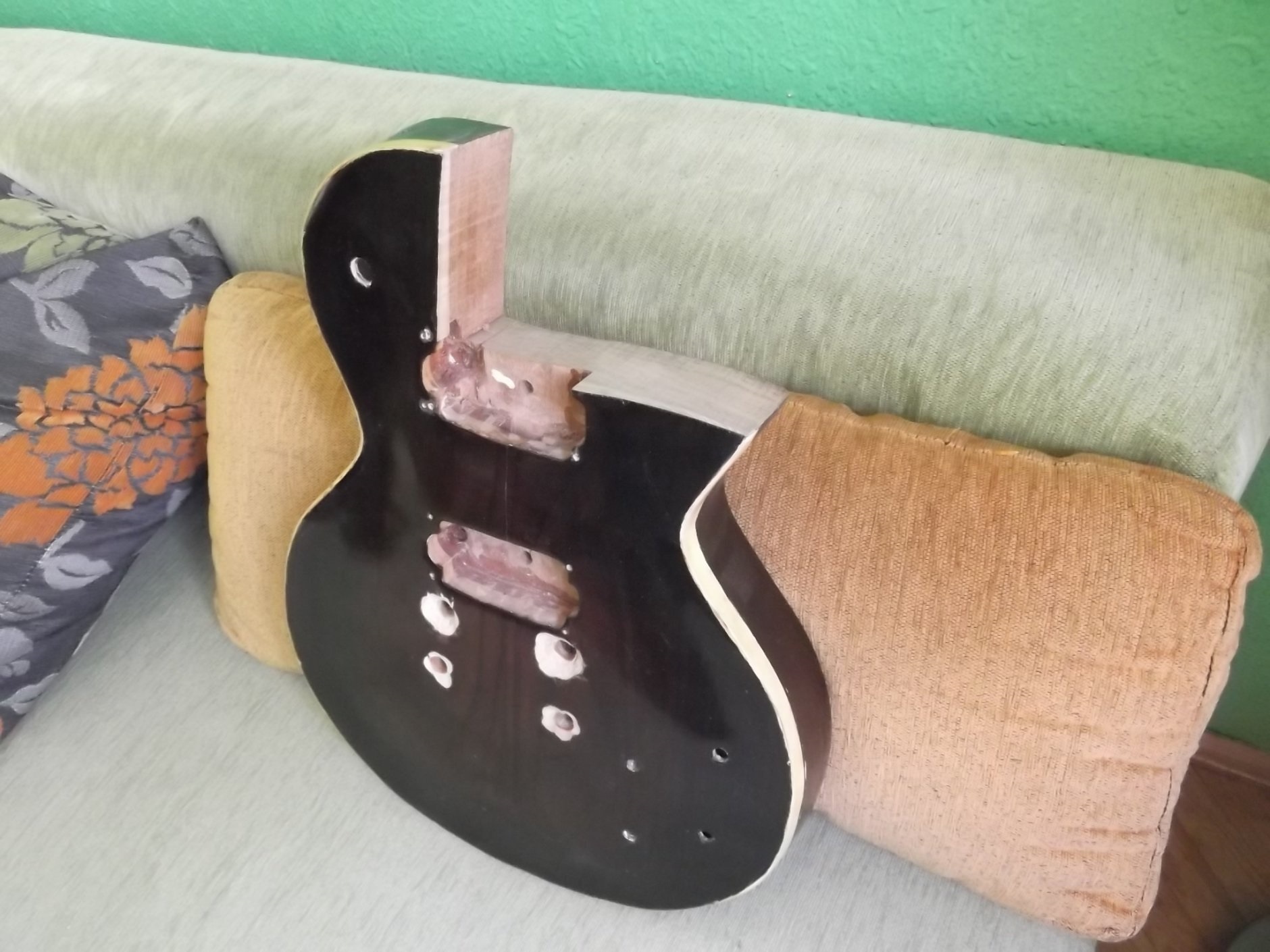
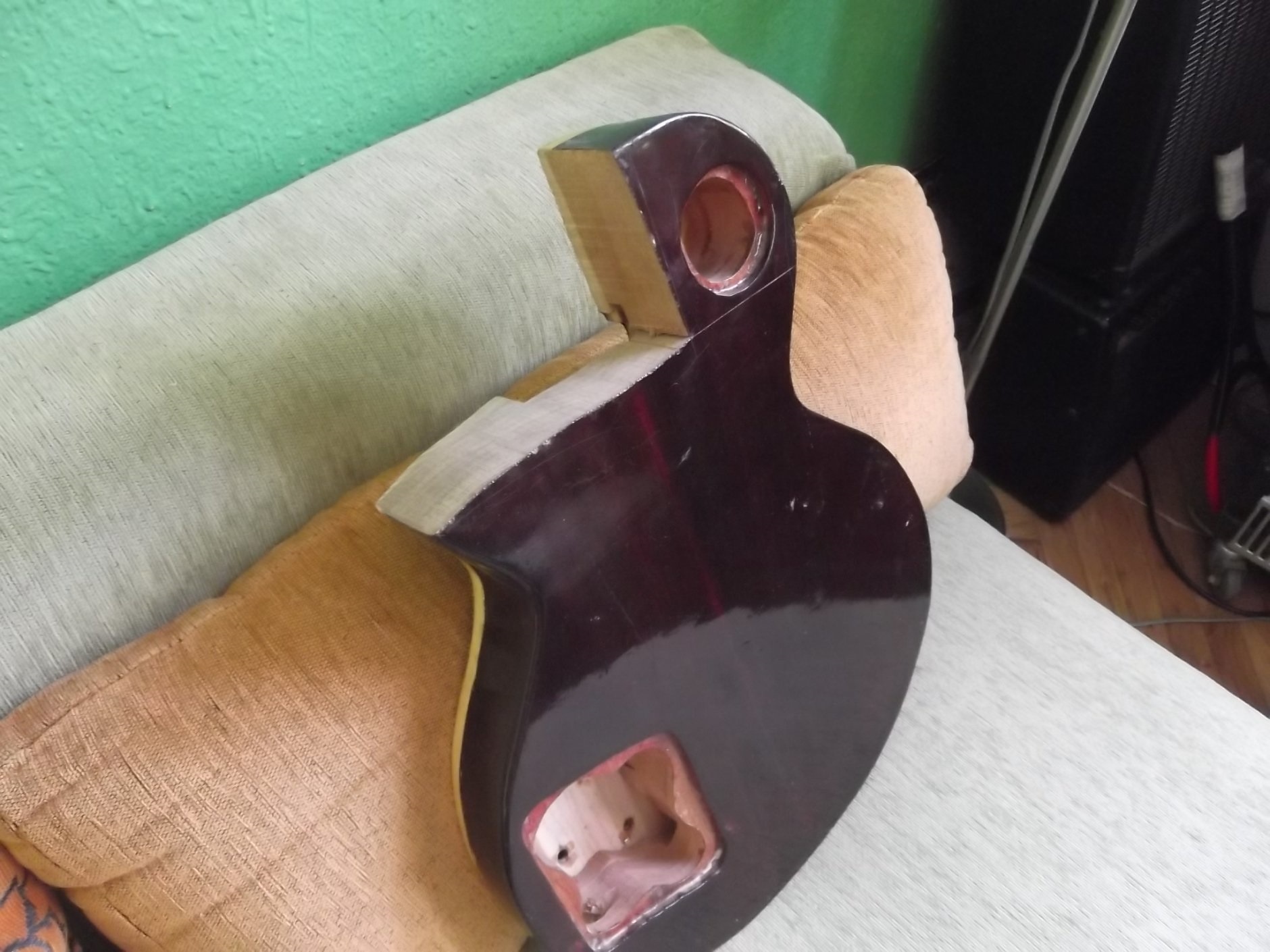
To me it looks like oak, probably white oak. It’s hard to tell for sure, but my guess is that the cabinet was built from reclaimed wood, hence all the dark streaks where checks in the wood created premature weathering in those areas. There could very well be other species mixed in too.
Hi i was just wondering what types of timber have been used in this cabinet
and this if possible :)
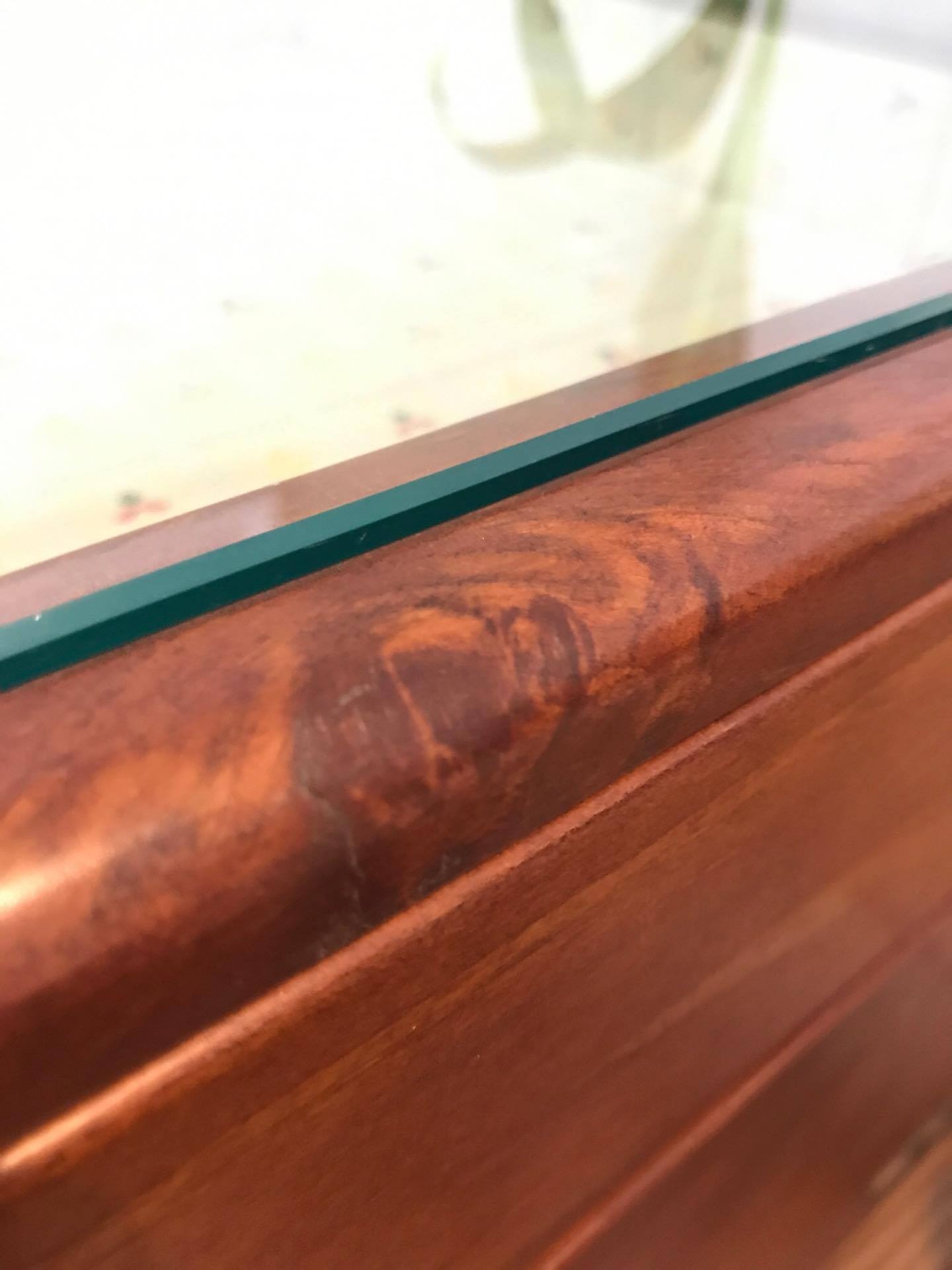
Could anyone identify this wood please? Would be very much appreciated!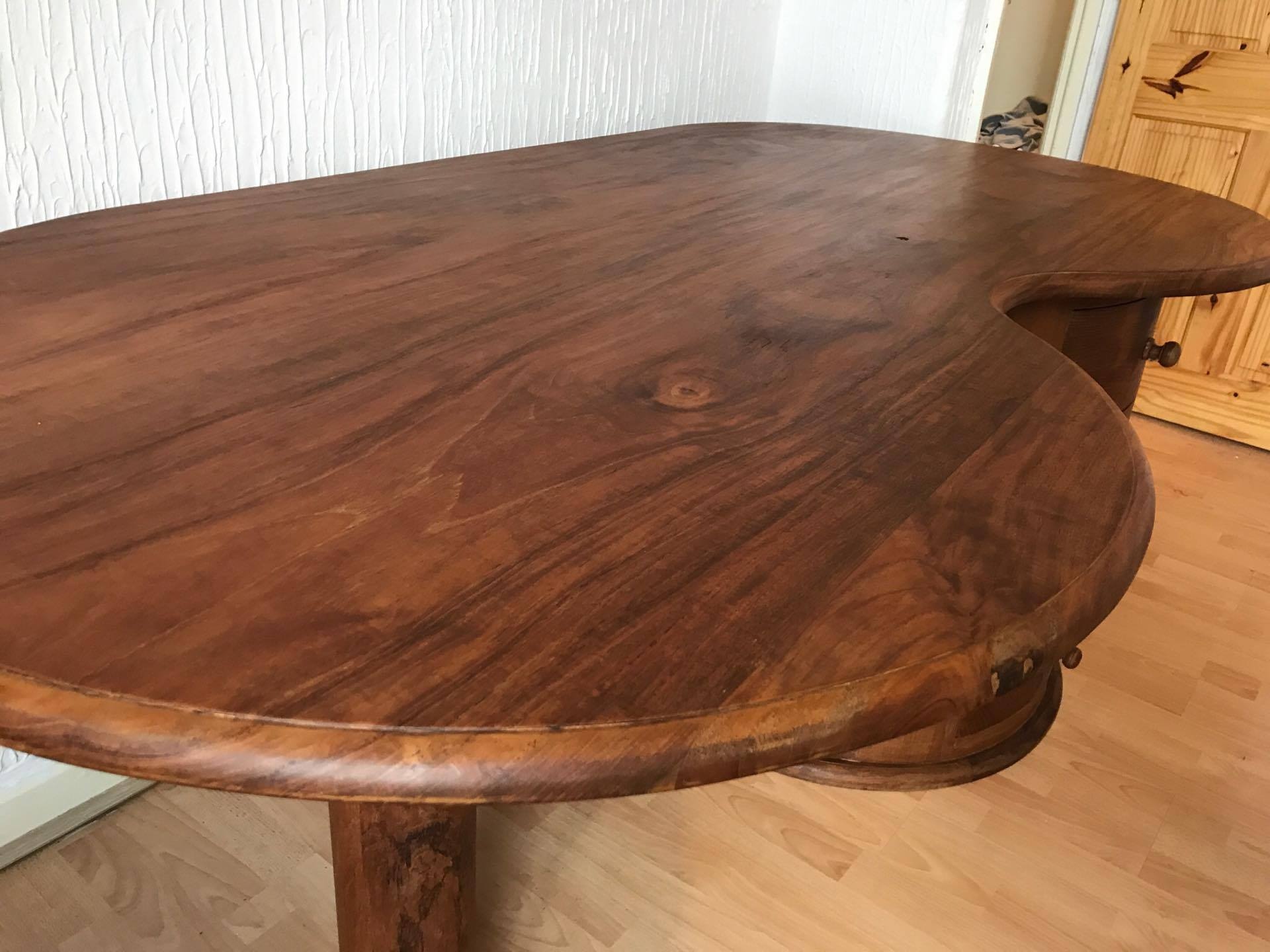
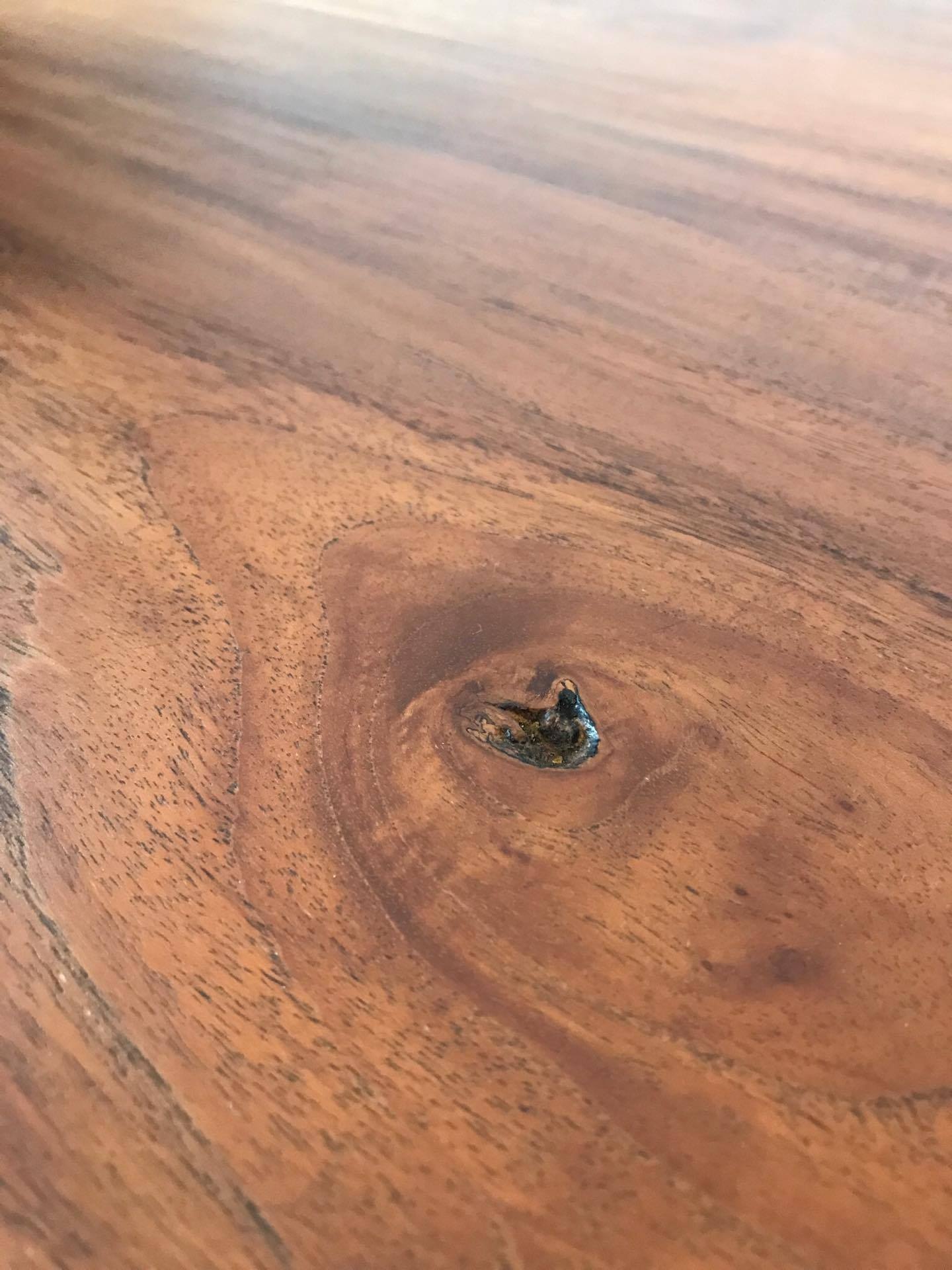
Can you please tell me what kind of wood you think this might be? I think it was made in Maine. It’s real pretty, two tone. Thank you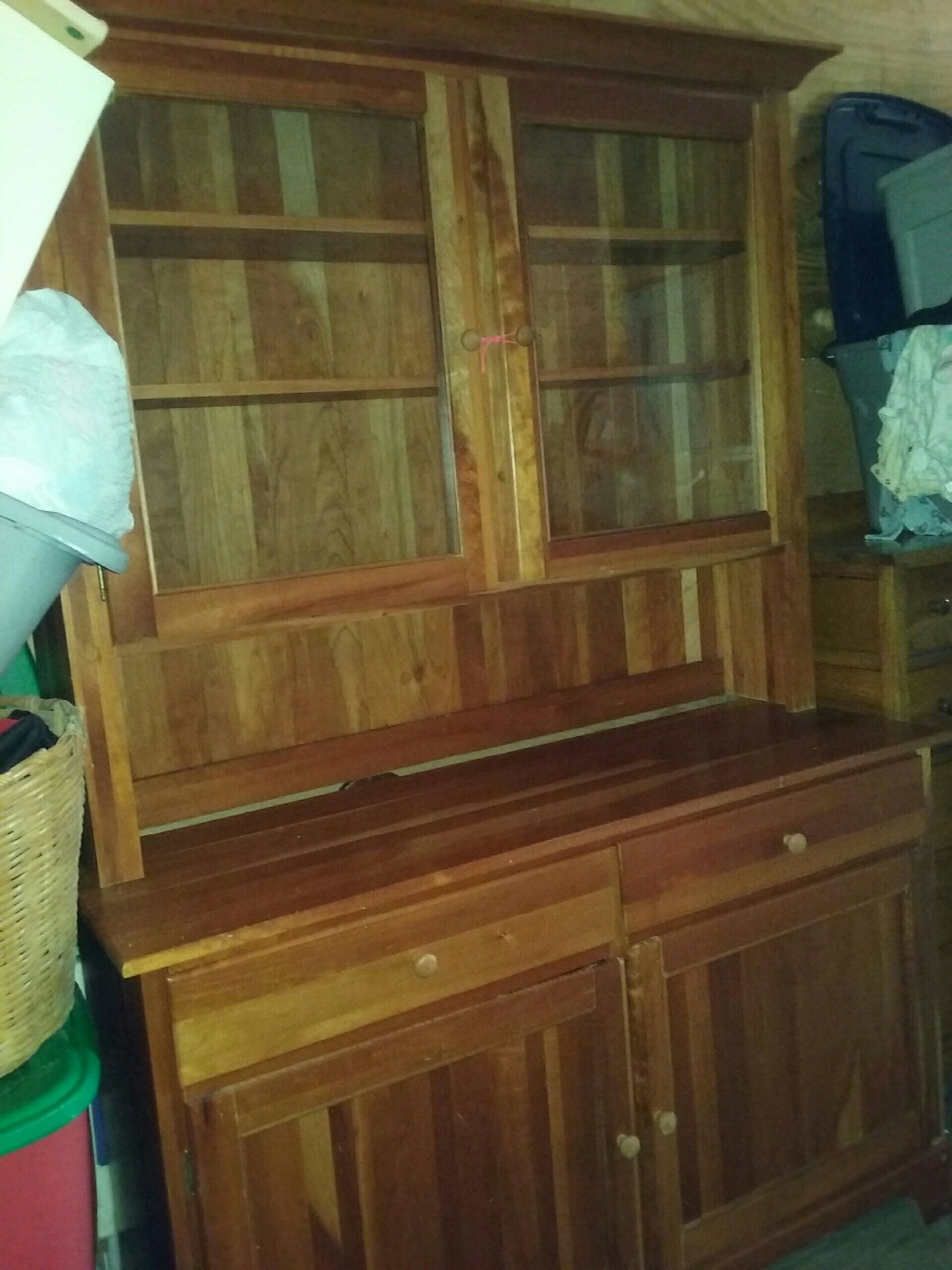
The two tone appearance that you are noting is more than likely the presence of both heartwood and sapwood in the tree itself. Looking at the upper cabinet, it definitely reminds me of cherry.
What Wood is this?
Anyone have any idea what wood this might be? I appreciate any help thank you
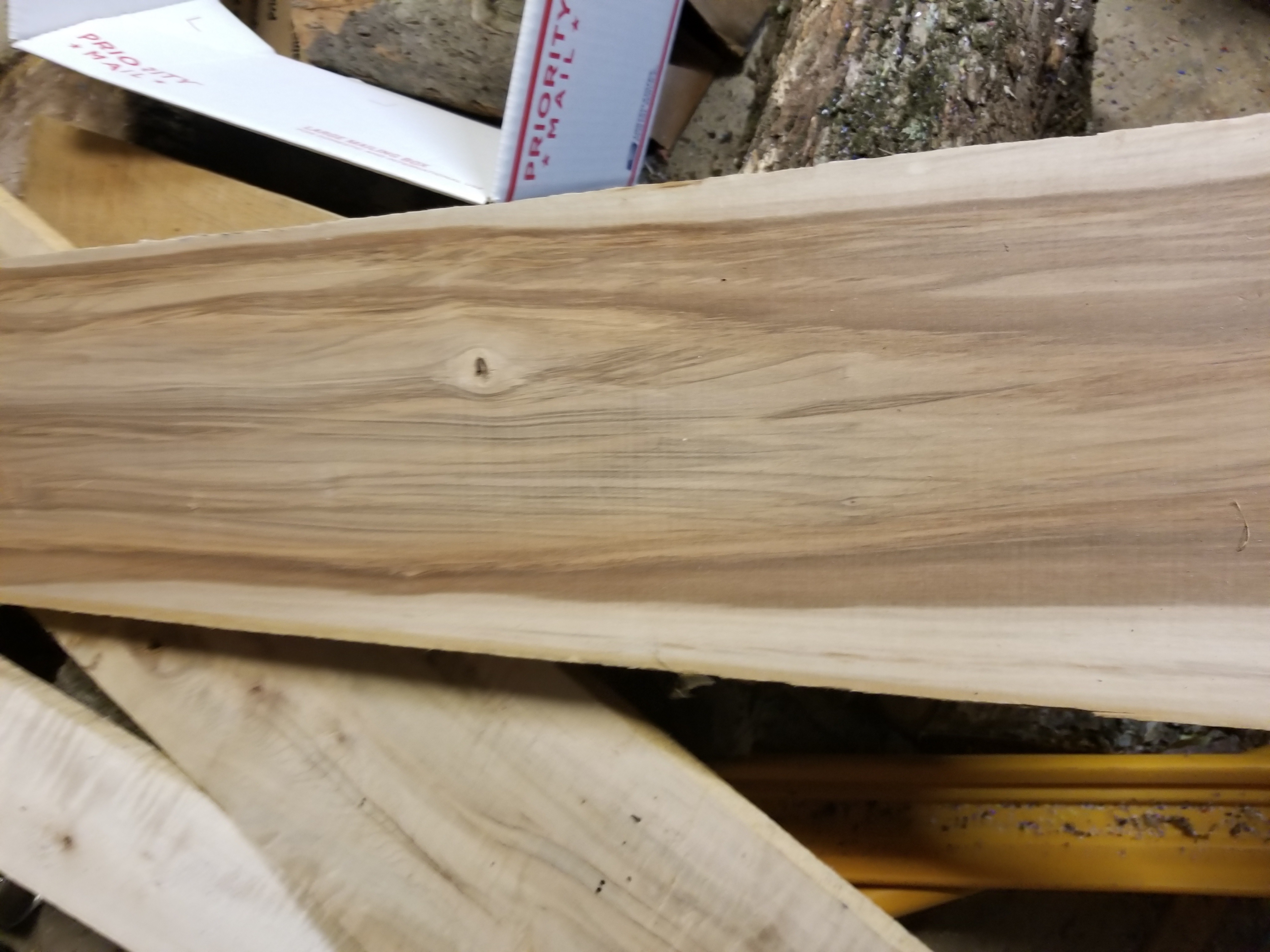
I am in awe of you wood afficionados on here! I just moved into a new house and the living room floor is wood (pictured). What kind of wood is this? And how can I maintain it? Thanks!
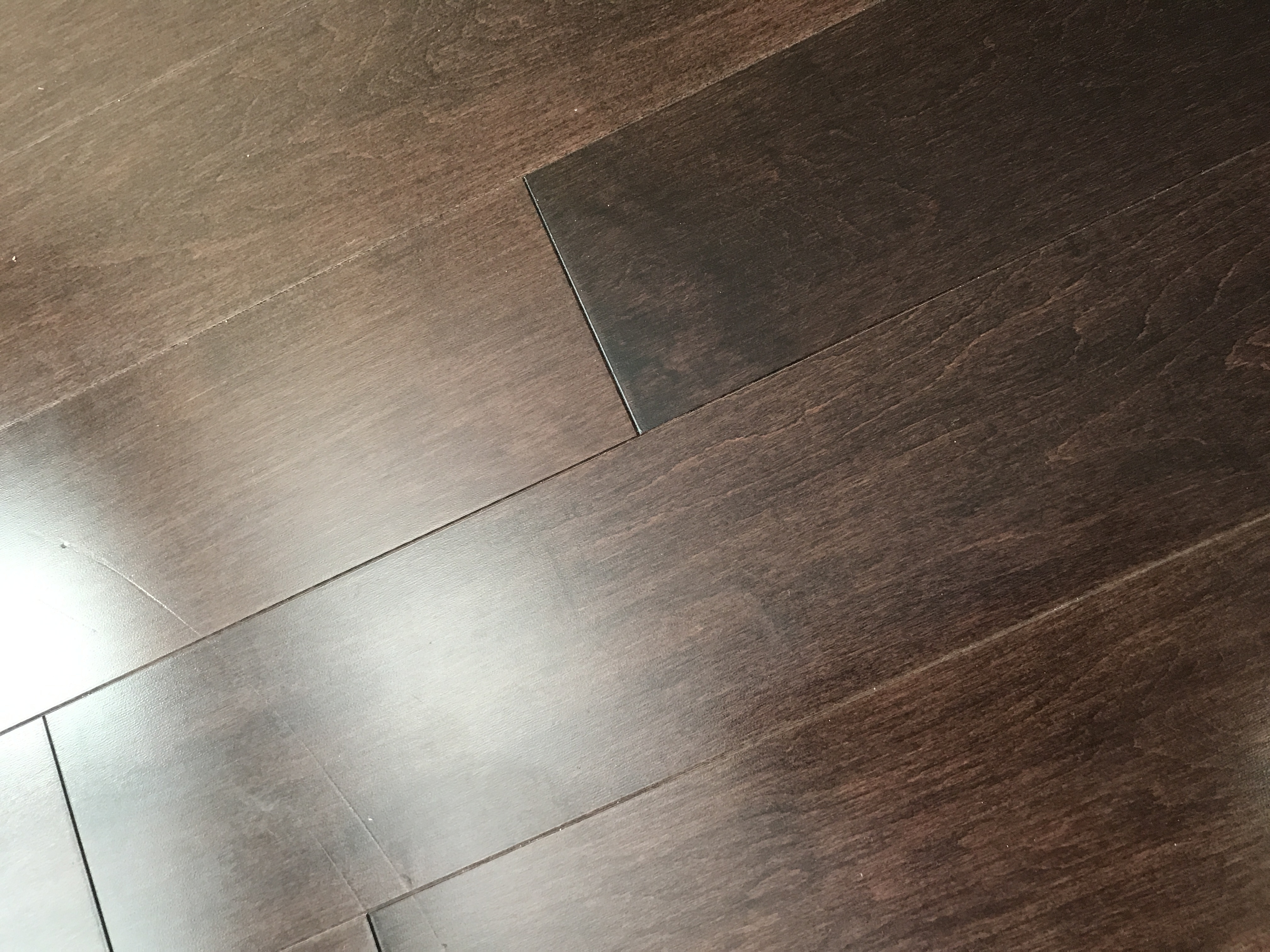
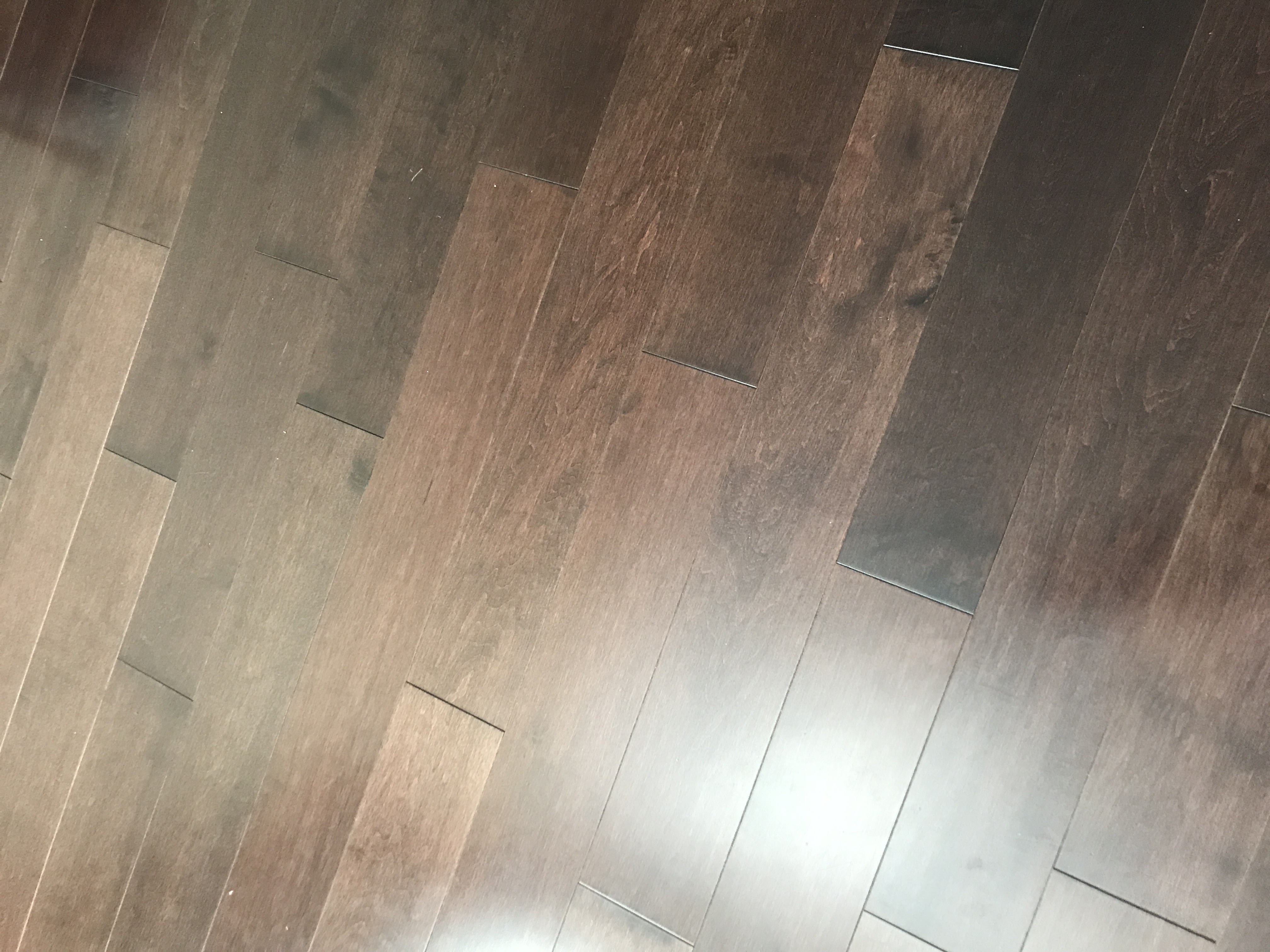
It looks like the wood has been stained and that’s not its natural color. I also guess that it is not solid hardwood, but is “engineered” wood that may not be able to be resanded or heavily refinished multiple times. My guess would be that the top exposed layer could be something like birch.
Can anyone help to ide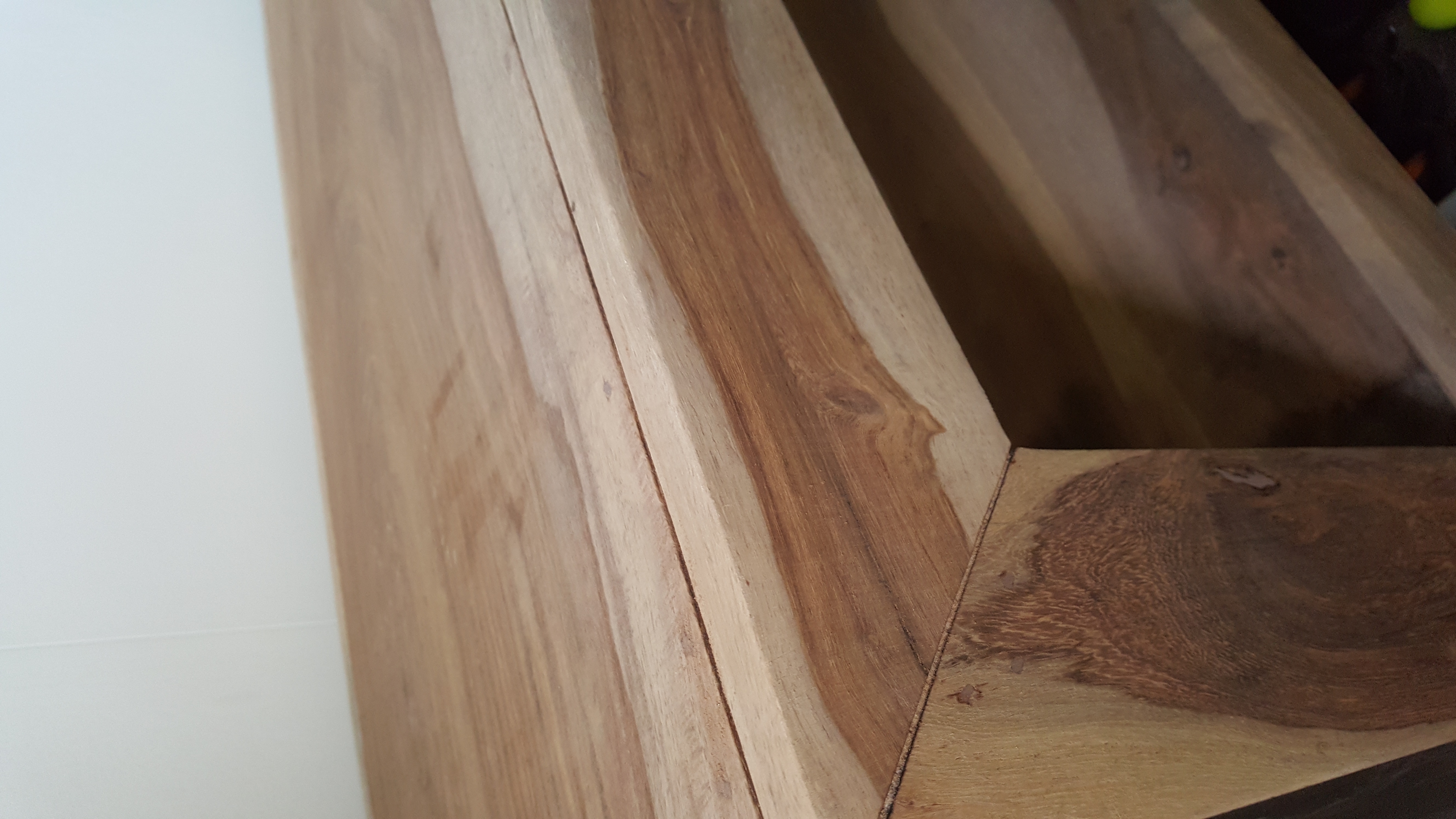
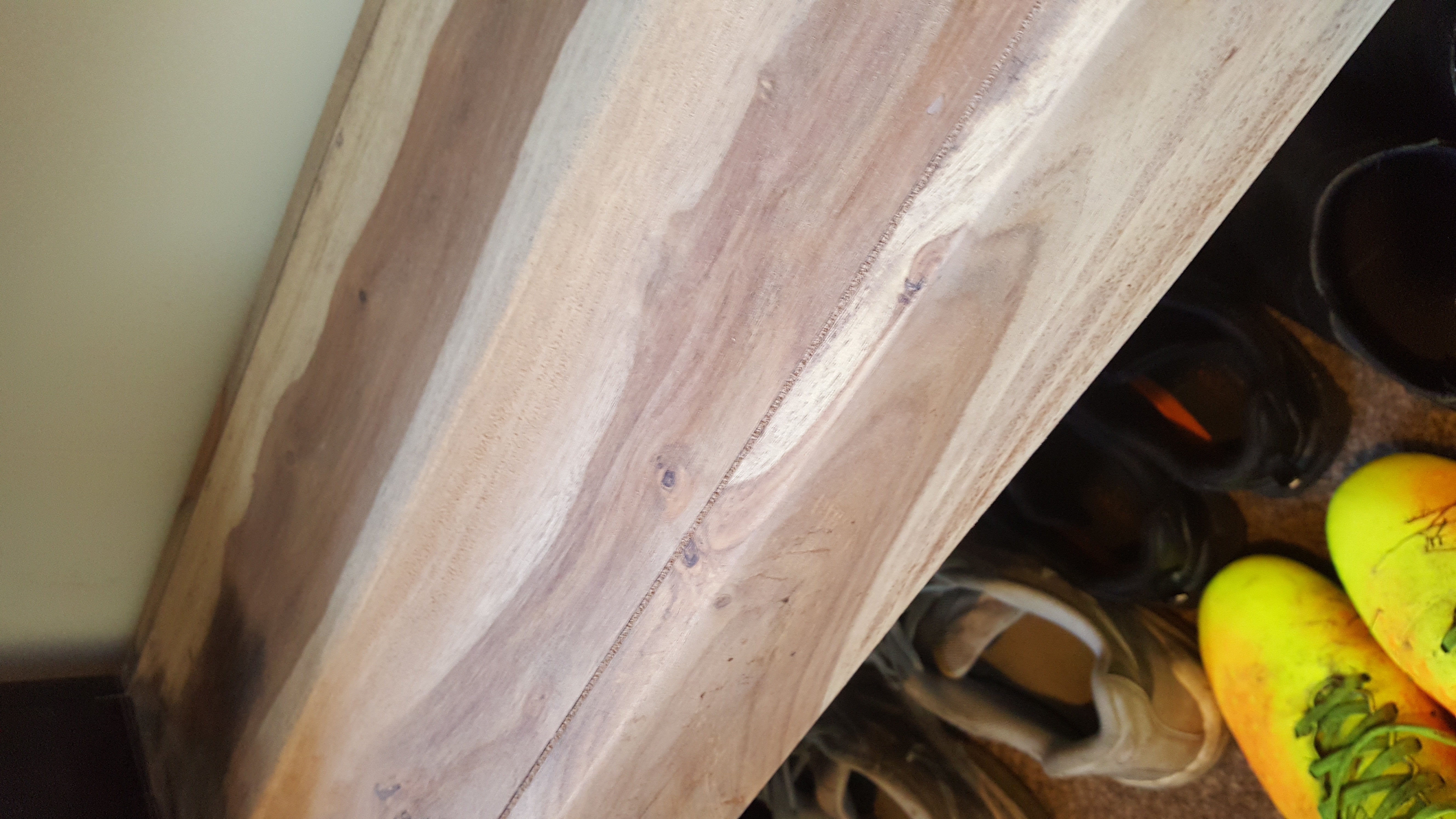 ntify what kind of wood my table is? it’s very heavy so I think it’s solid, I’ve sanded it down and the colour changes from dark to light naturally.. would love to know! thanks in advance
ntify what kind of wood my table is? it’s very heavy so I think it’s solid, I’ve sanded it down and the colour changes from dark to light naturally.. would love to know! thanks in advance
The heartwood and sapwood combination reminds me of some piece of Sheesham that I have seen in the past, but it’d be near impossible to tell without a close, finely sanded, closeup picture of the endgrain.
Anyone know what wood this is? These are all pics of the same table… The dry looking one is the underside.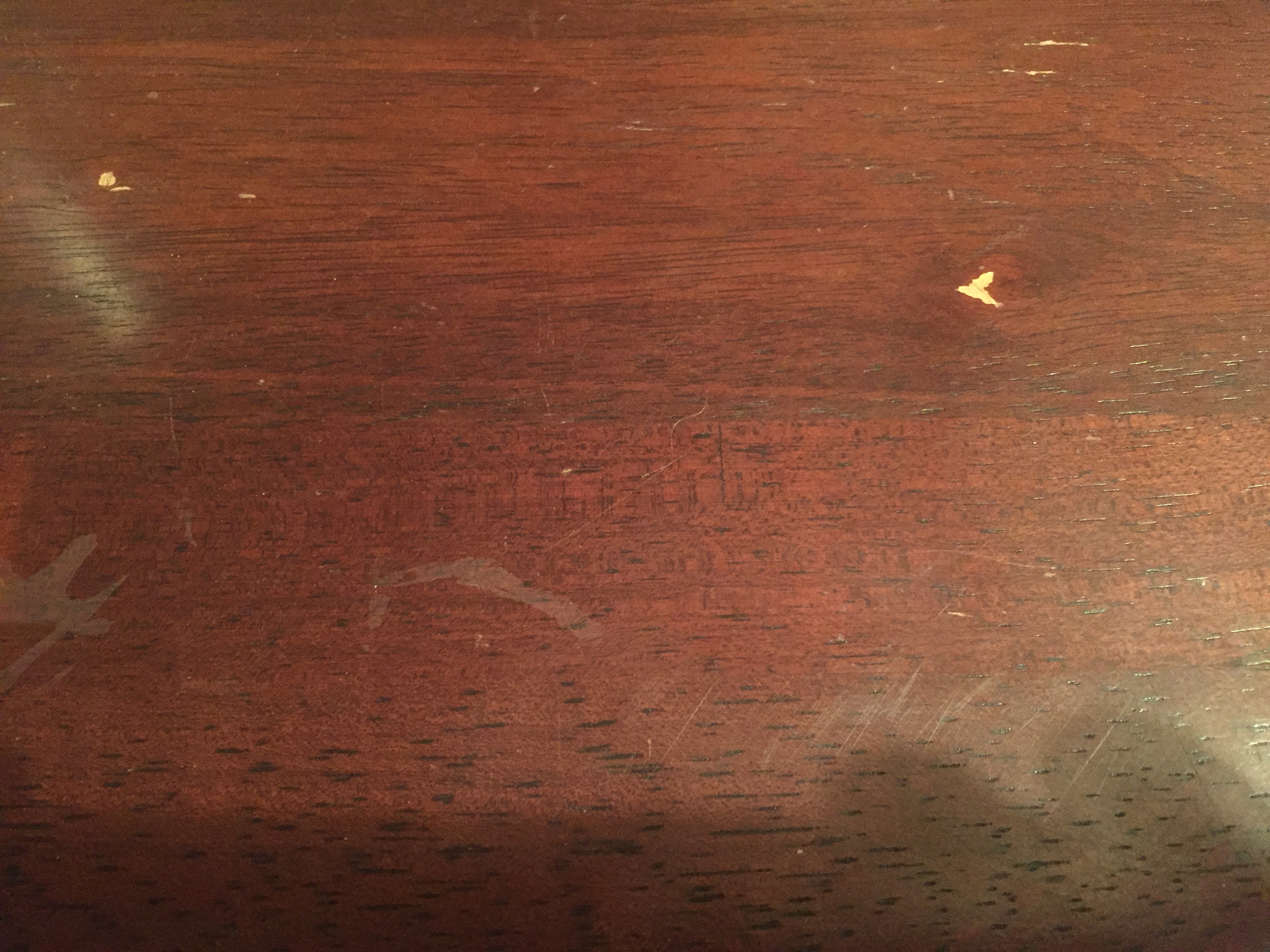
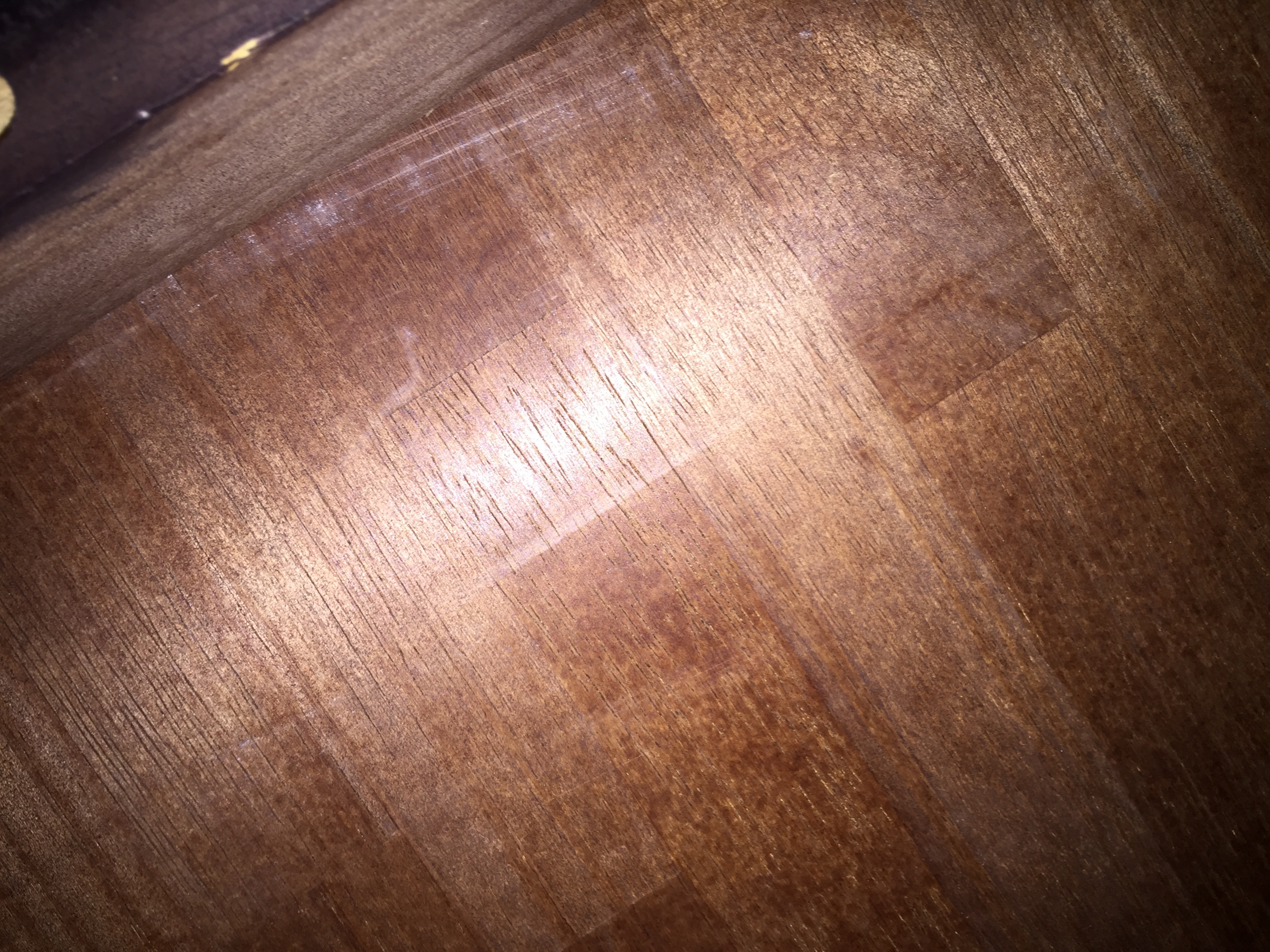
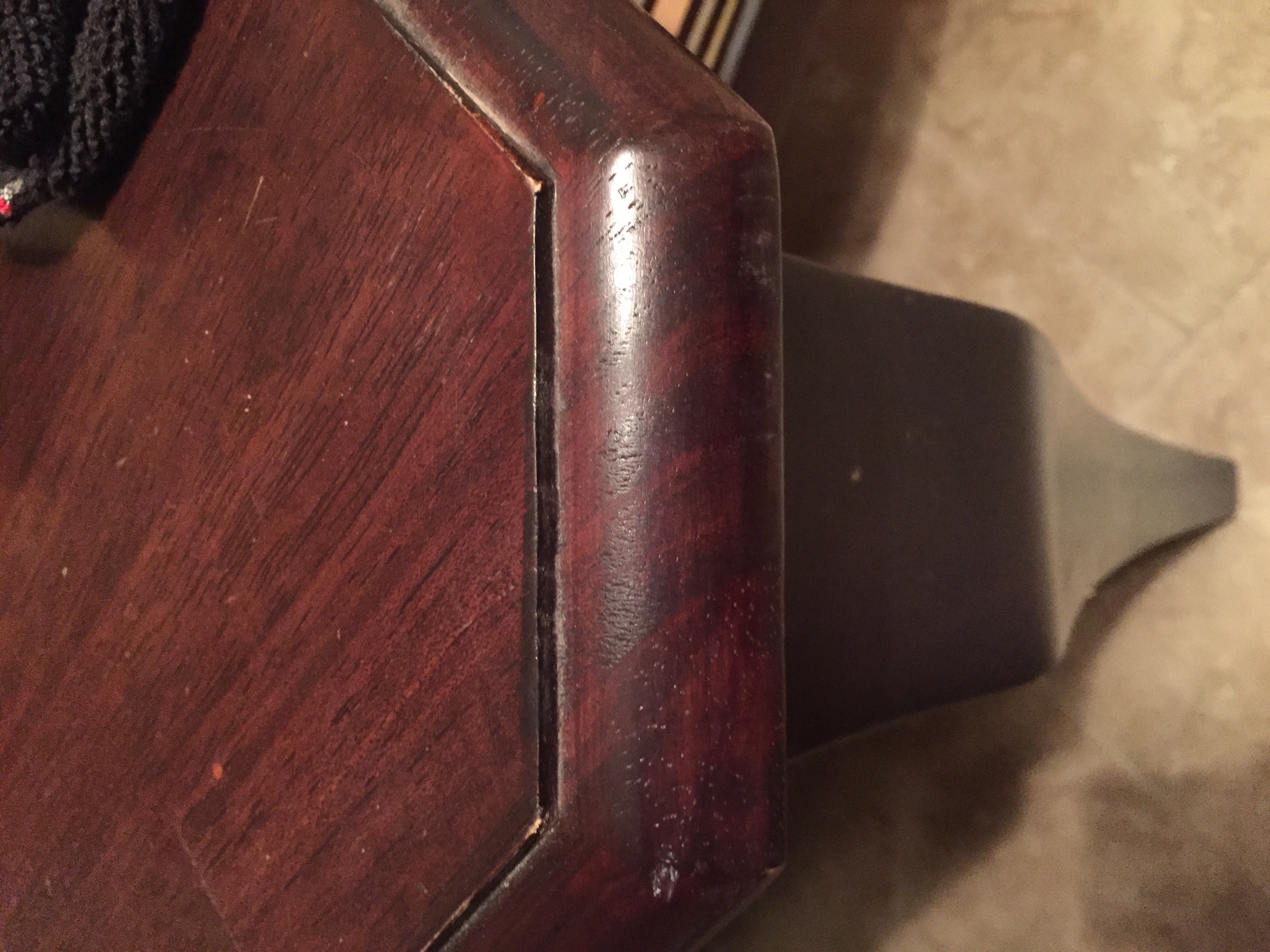
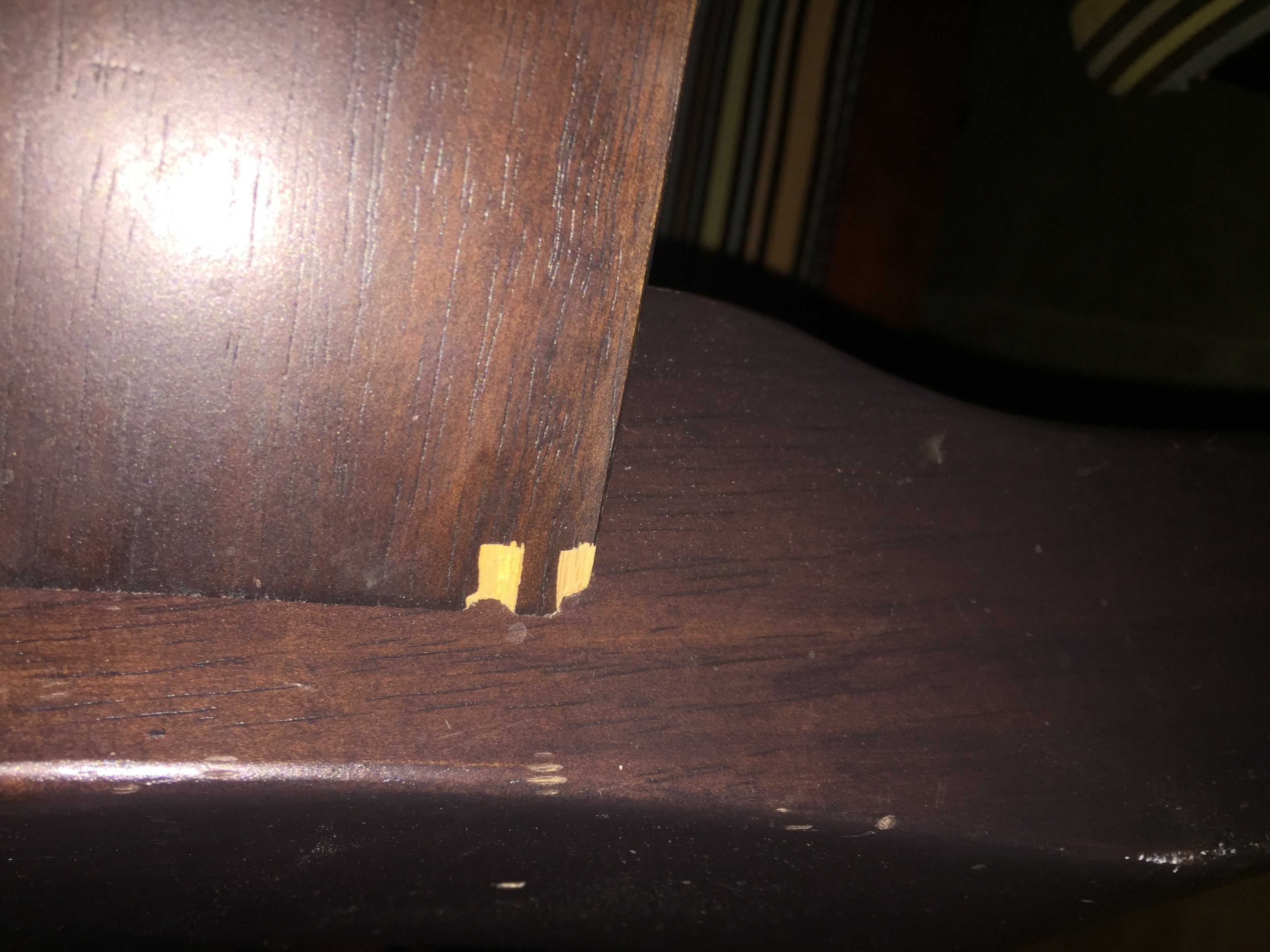
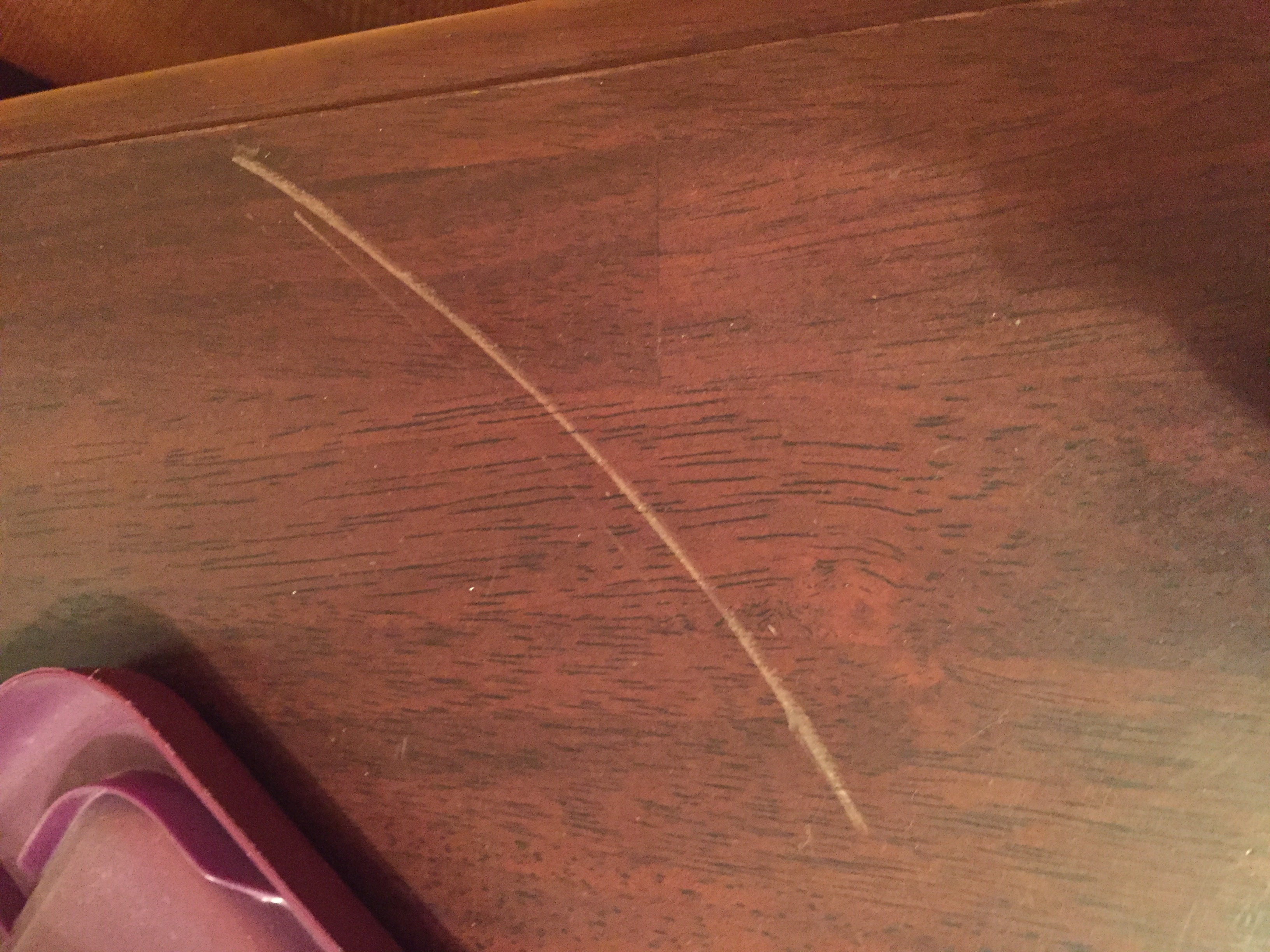
Well, at the very least, it looks mahogany-like. https://www.wood-database.com/wood-articles/mahogany-mixups-the-lowdown/
Can anyone tell me what type of wood this is? 1st photo = top. 2nd photo = Made in Canada mark on back/top. 3rd photo = inside drawer.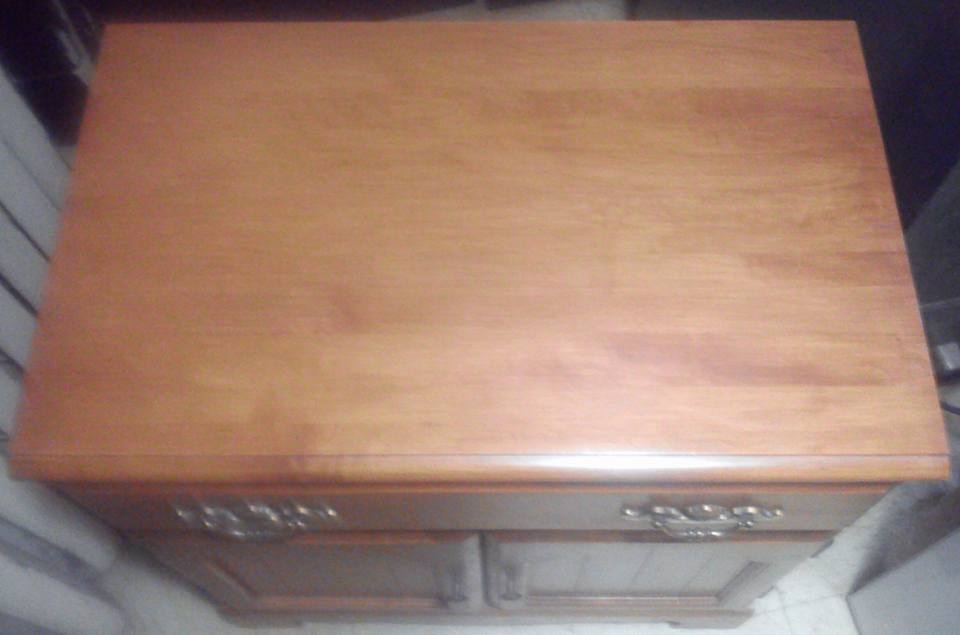
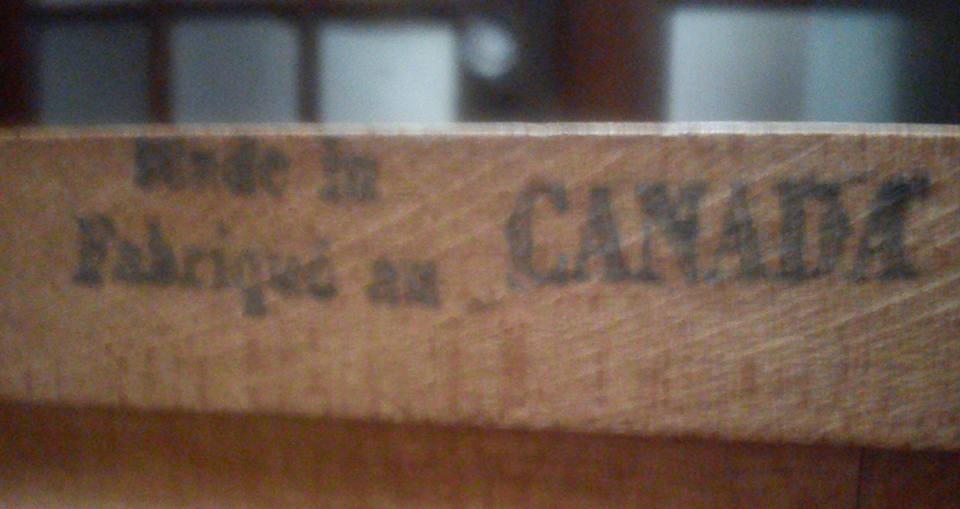
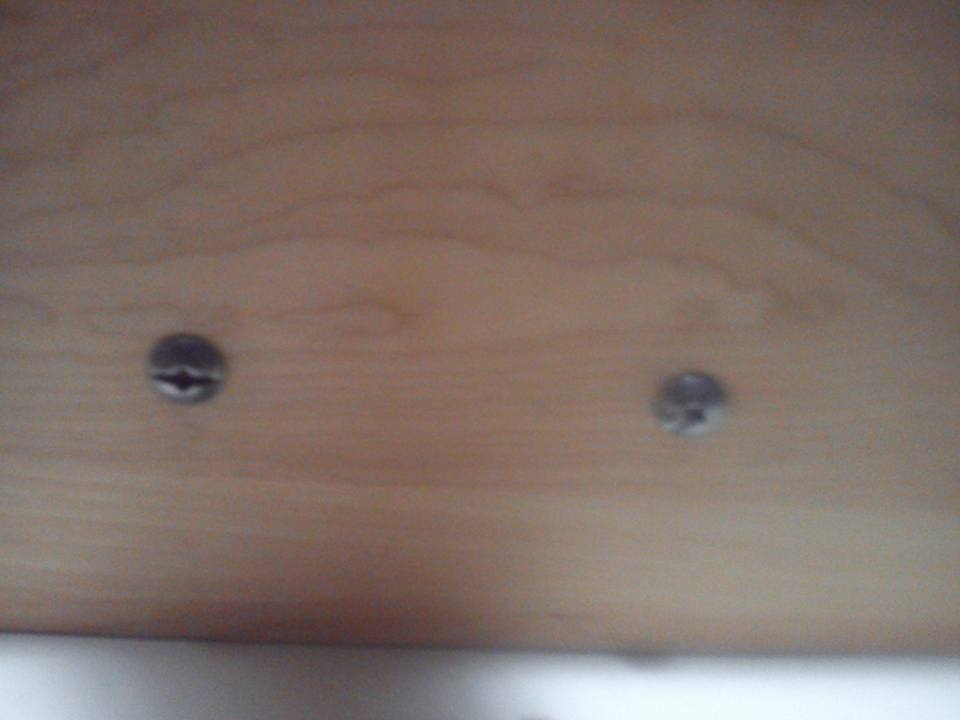
Can’t tell from the photos — can you get a close picture in better lighting? An initial guess might be maple or cherry.
Looks very much like an old-growth, quartersawn softwood. I’m not sure what types of softwoods were common to the UK in the past century, but I’m guessing that appearance-wise, it would look pretty close to some old growth, quartersawn douglas fir that we have over here.
Thank you, then it’s probably pine which was used a lot in the early 1900s. It was the fact that it was ‘quartersawn’ that threw me making it look different, but now I Google quarter sawn pine it seems to match.
As you guys know the deck of a house is generally a wooden platform built above the ground. it look more gorgeous and ipe wood is best for it. suggest you to visit ipewoods.com
Can somebody comment on this old yellow pine that seems to have a yellow residue? What might this be since it’s only on the wood? https://www.diychatroom.com/f19/old-yellow-pine-framing-gives-off-yellow-tar-like-residue-533577/
Does anyone know what type of wood this is? Thank you..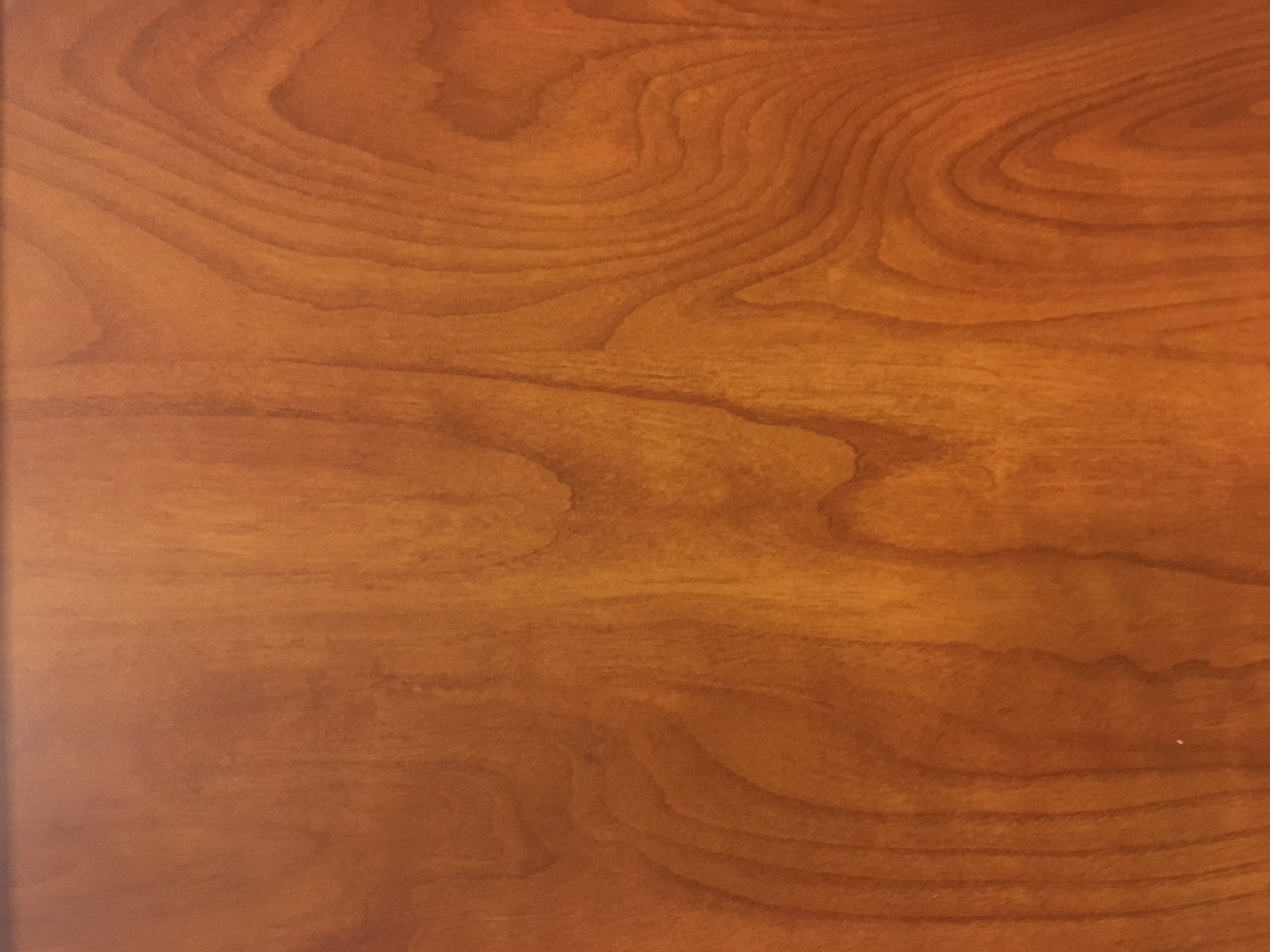
Any one got an idea of the type of wood? Second is after a coat of poly
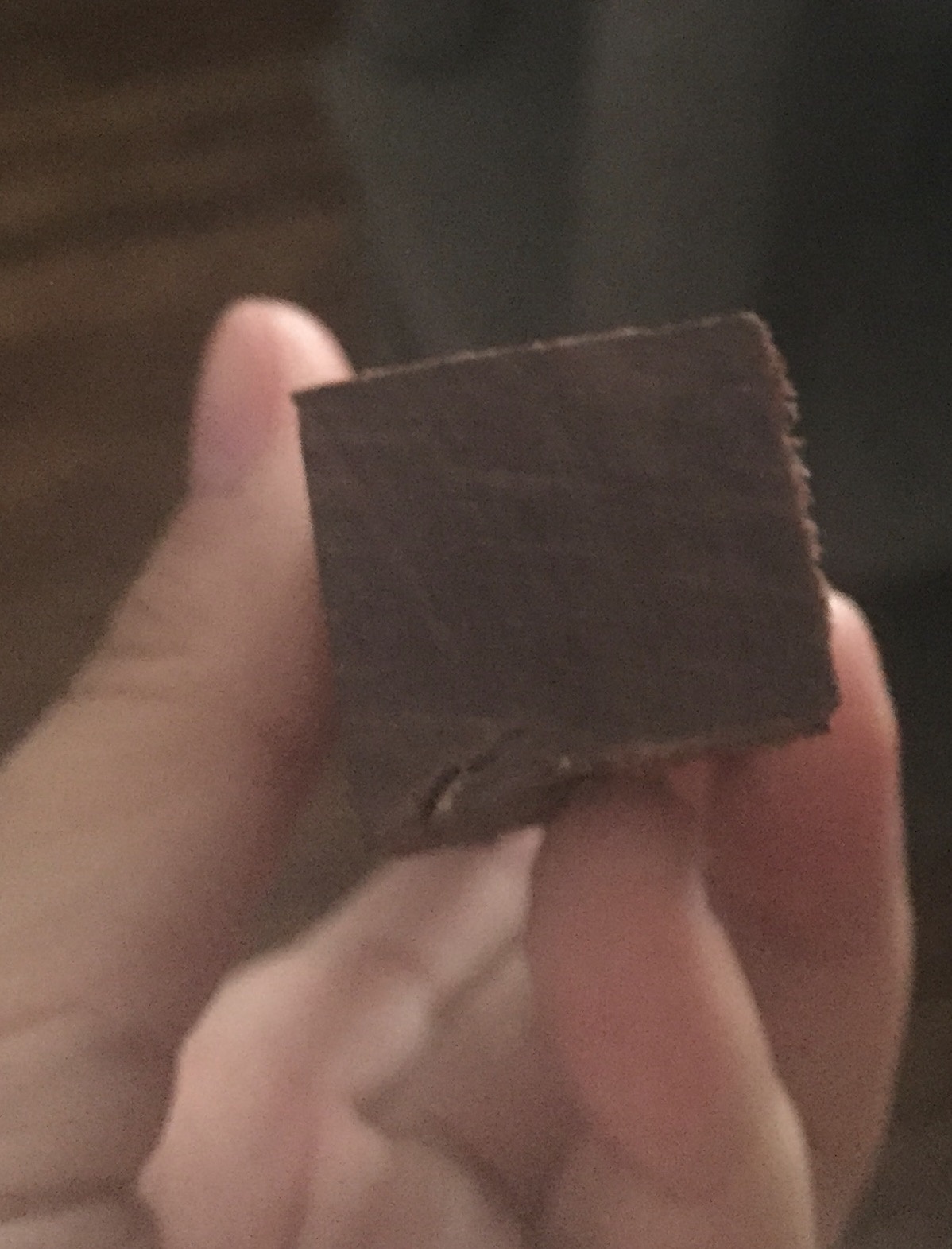

I’m looking to buy an old house built in the 1970s and it has these timber floors throughout. Can anyone help identify what type of timber this is?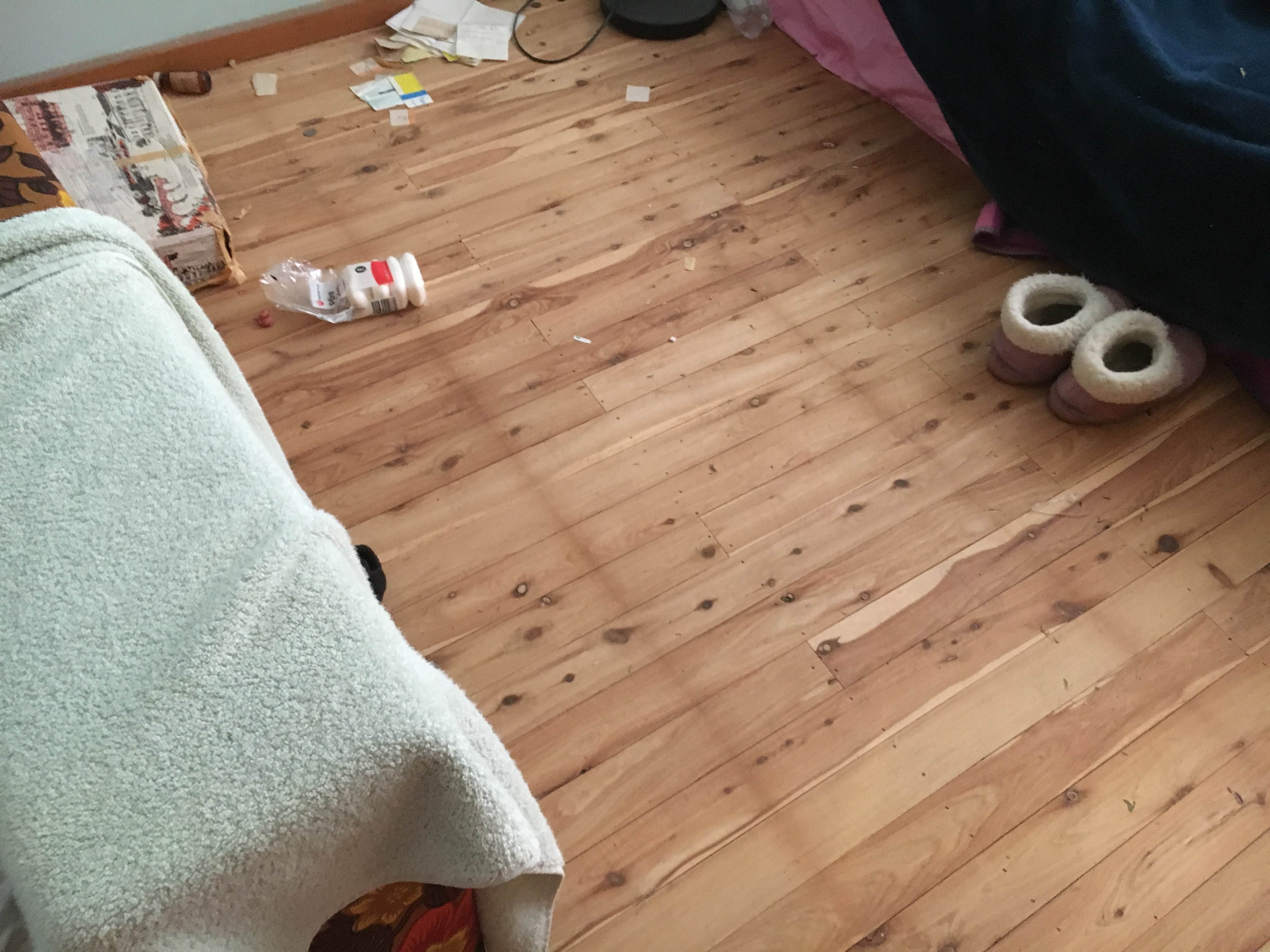
Hard to tell from that distance. One possibility would be hickory.
I’ve seen red cedar that looks very familiar.
Just bought a table and was wondering if anyone could tell me what kind of wood it is any tips on upkeep and the sort
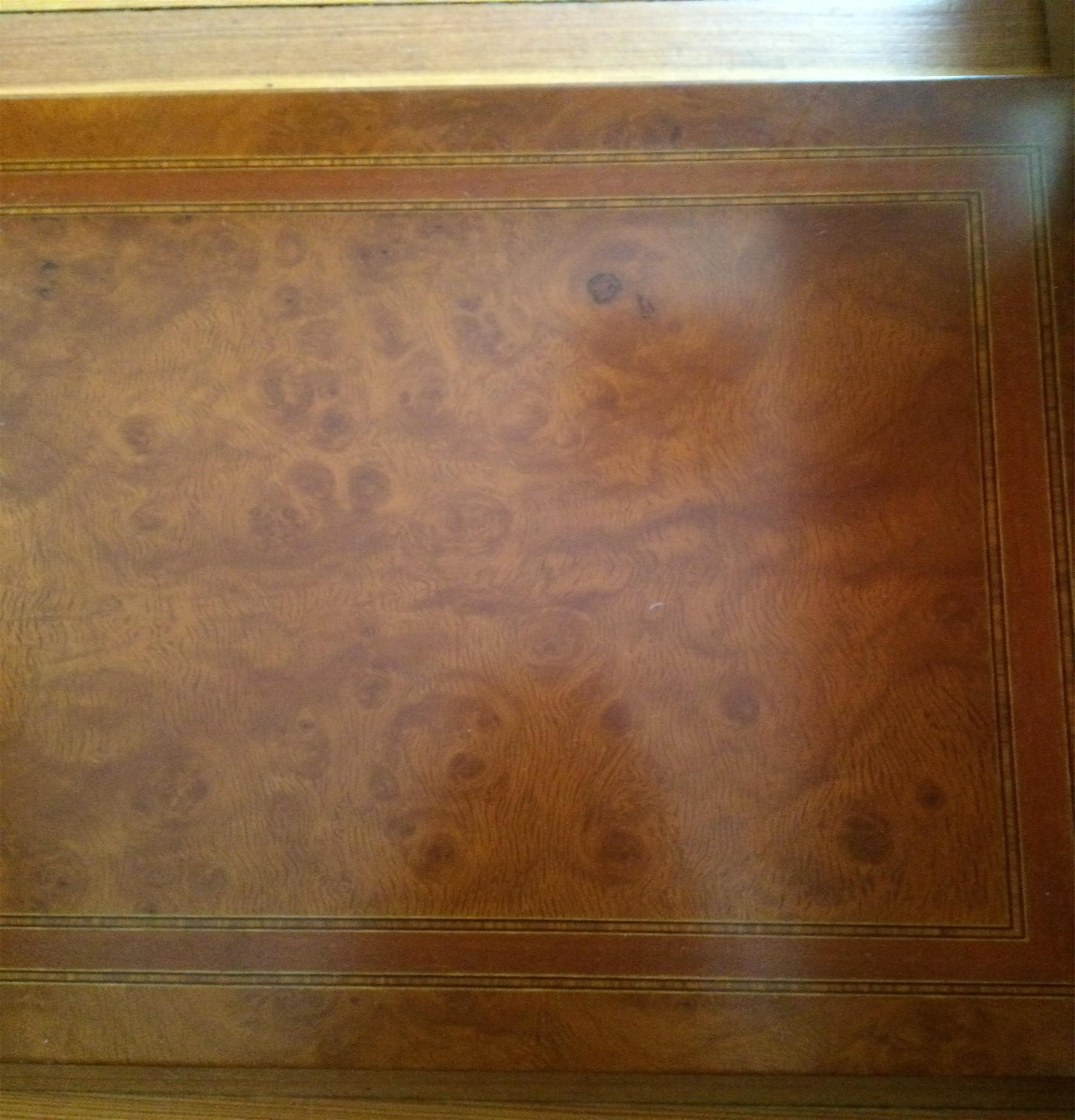
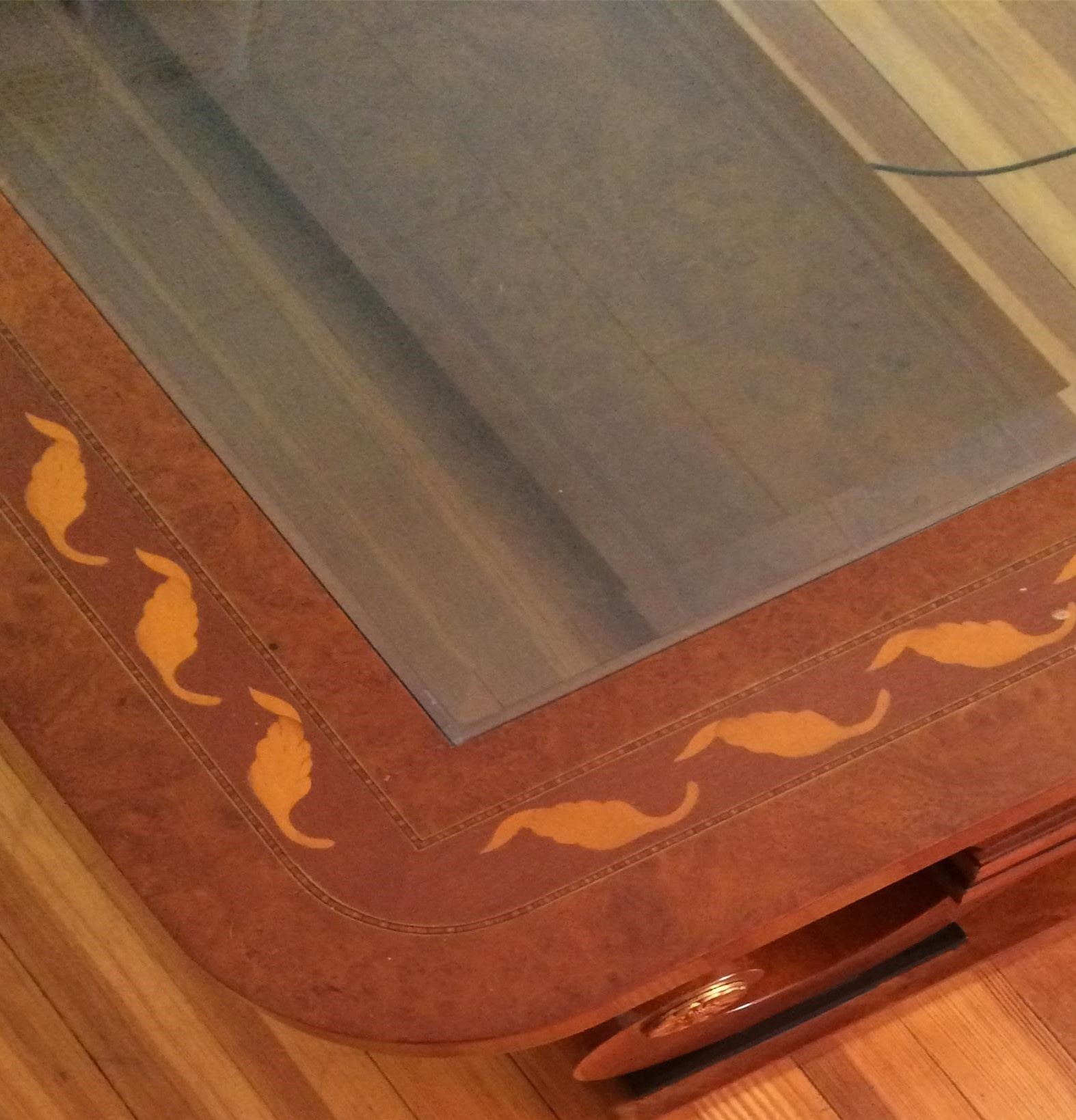

Looks like multiple types of wood are in use there, but primarily a burl veneer. The entire top appears to be veneered. Very nice. Just don’t go too crazy with it; I know of people that have tried to refinish veneer top tables only to sand through the veneer, essentially ruining the entire top.
Thank you so much! It is very much appreciated
Looking for a little help. I picked up this cute little rocker at an estate sale and was told it’s tiger wood? Can anyone confirm or tell me what the wood is?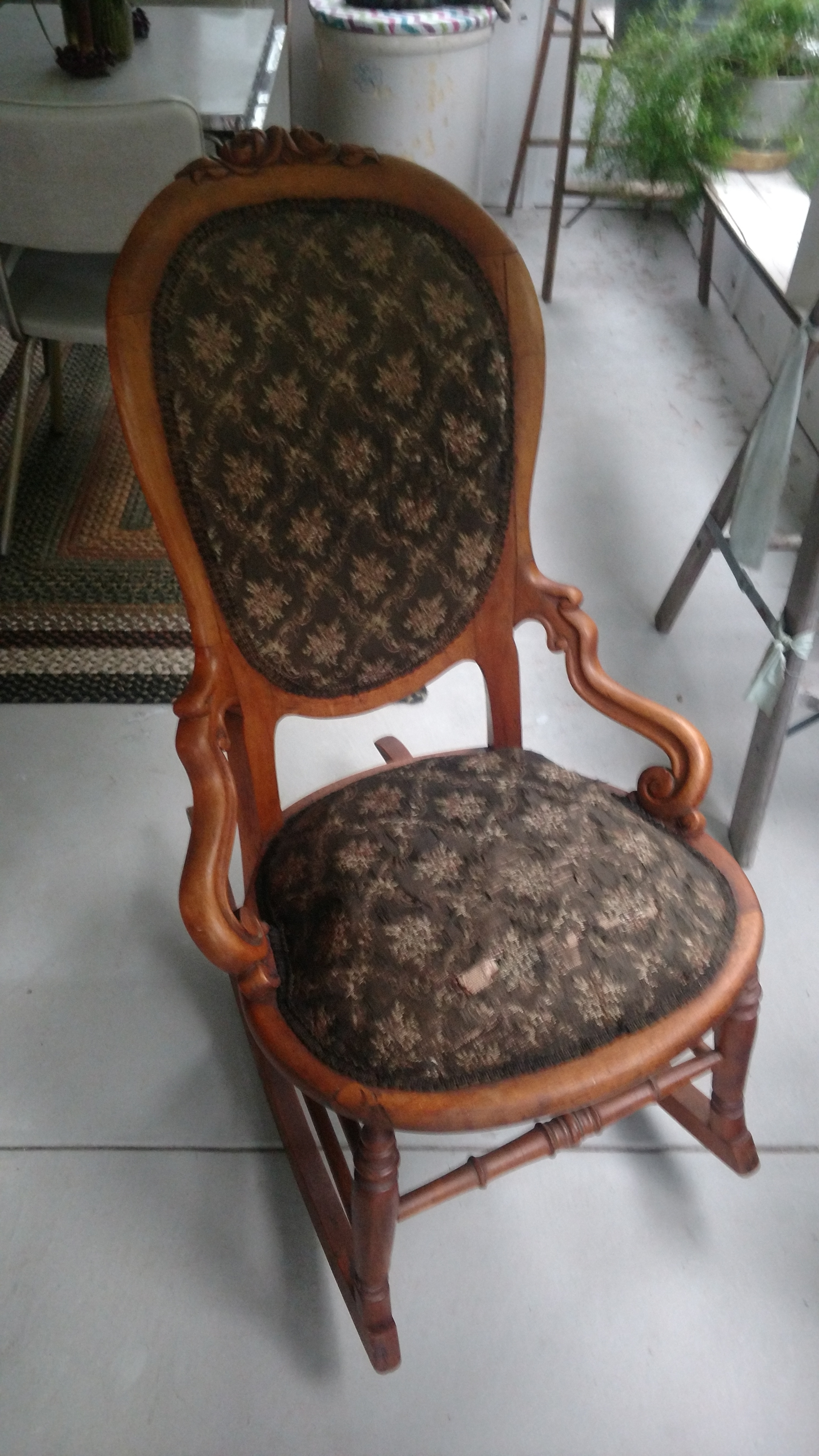
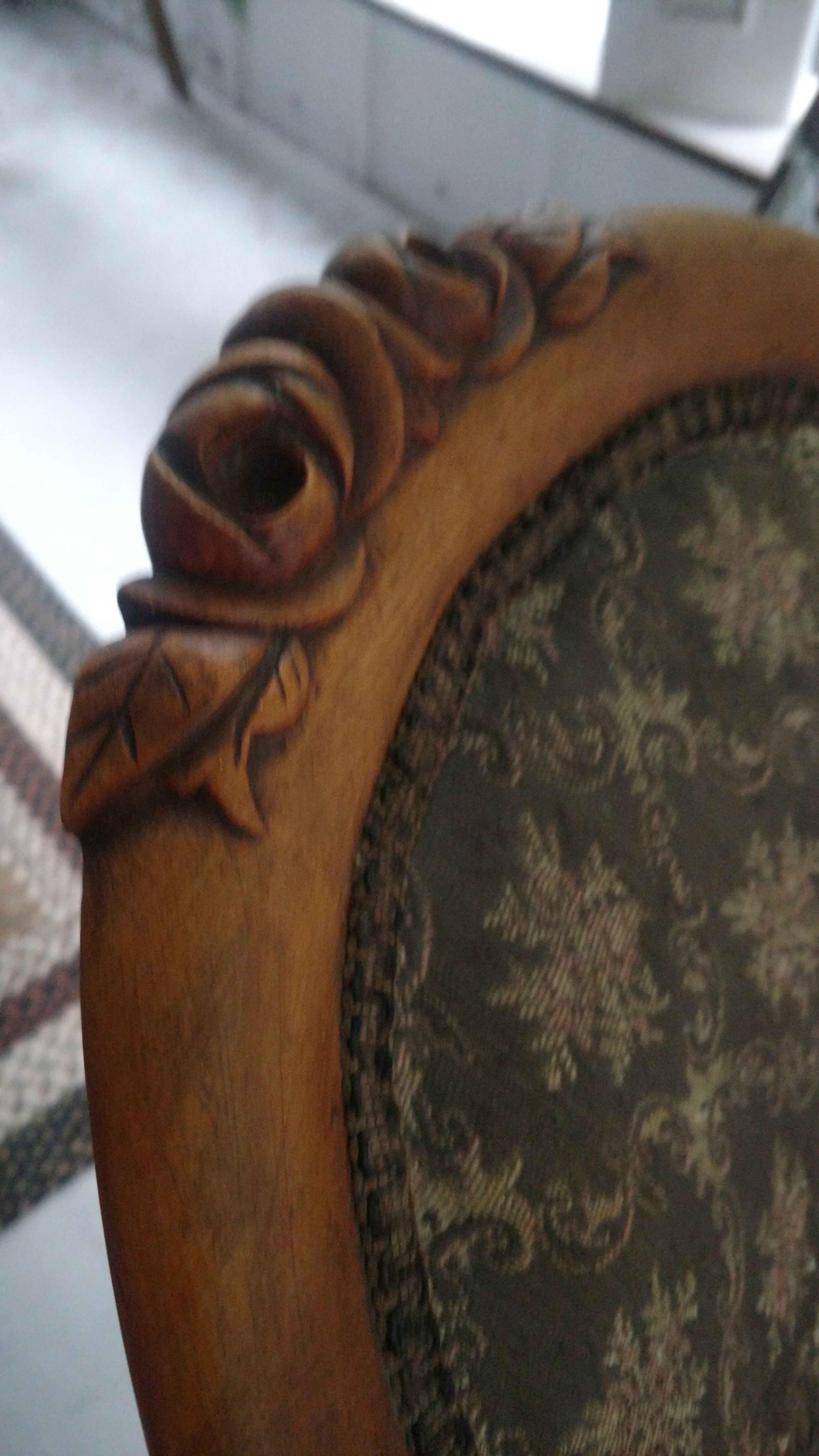
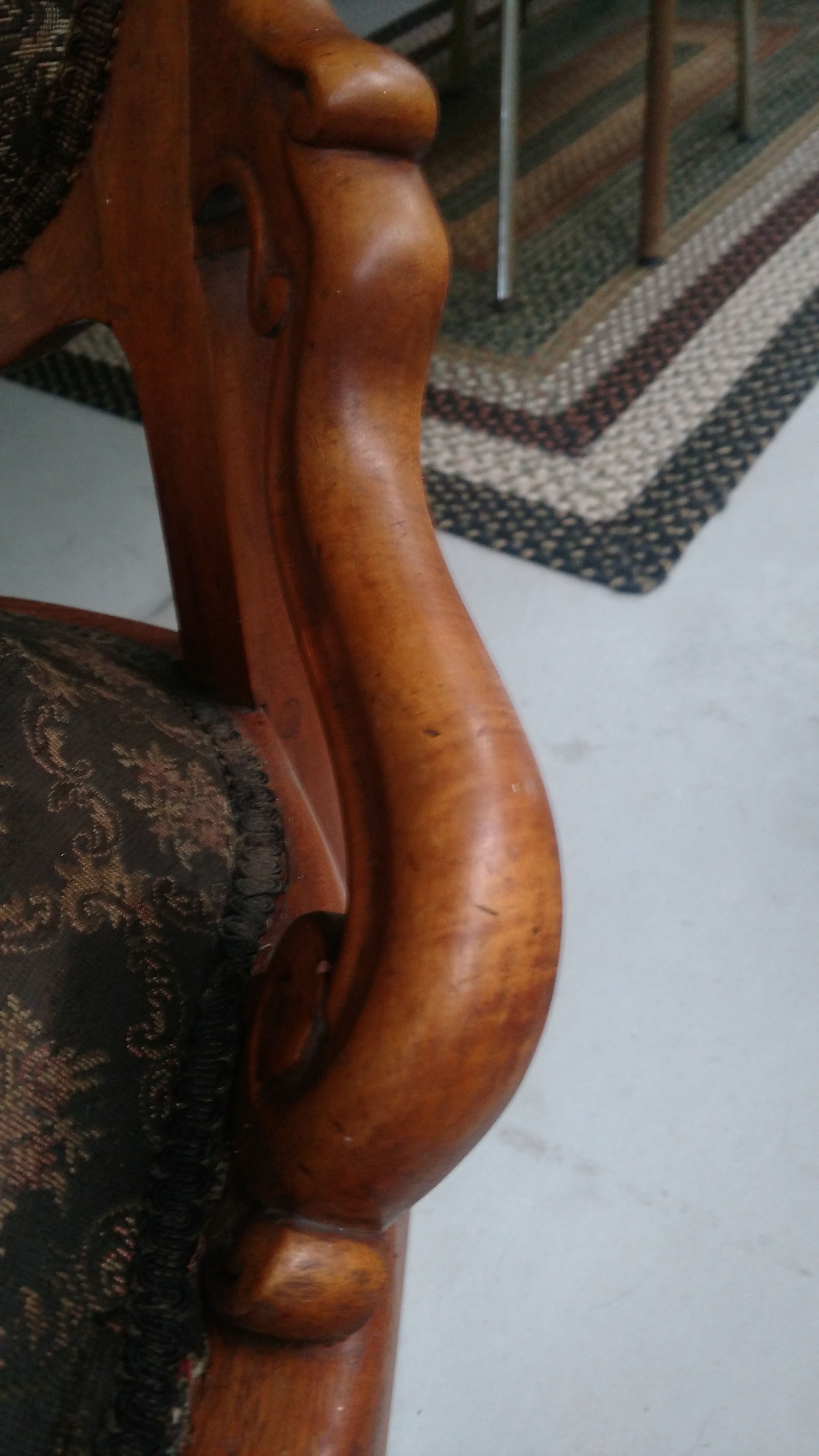
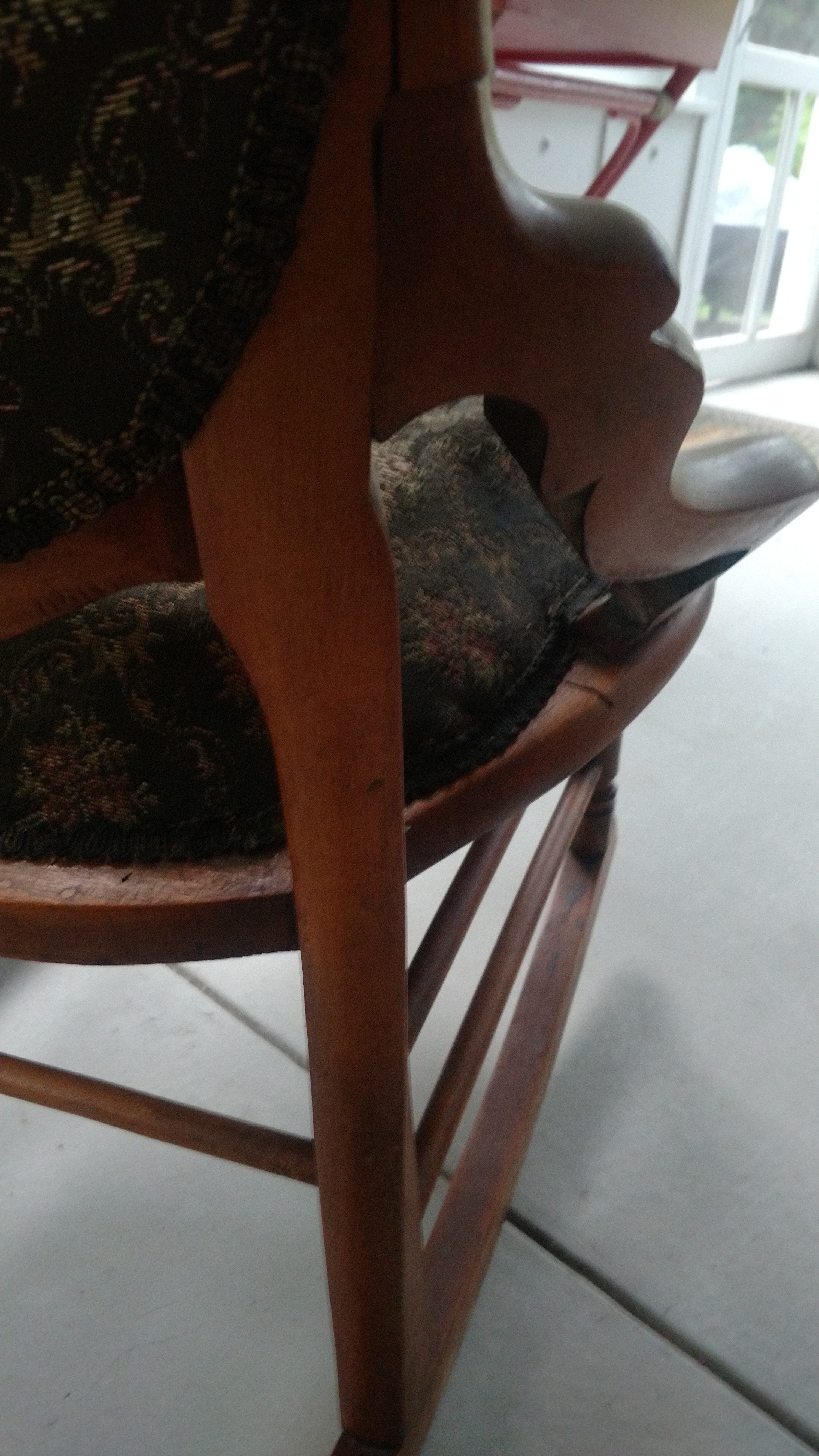 Also if anyone has more detail of this rocker that’d be awesome.
Also if anyone has more detail of this rocker that’d be awesome.
Can’t tell from the pics. It appears that the wood has been stained and is not the natural color. I would need to see a finely sanded view of the endgrain to get a better idea on ID.
Anyone able to tell me what this is? Its a mirror from the royal opera house in london.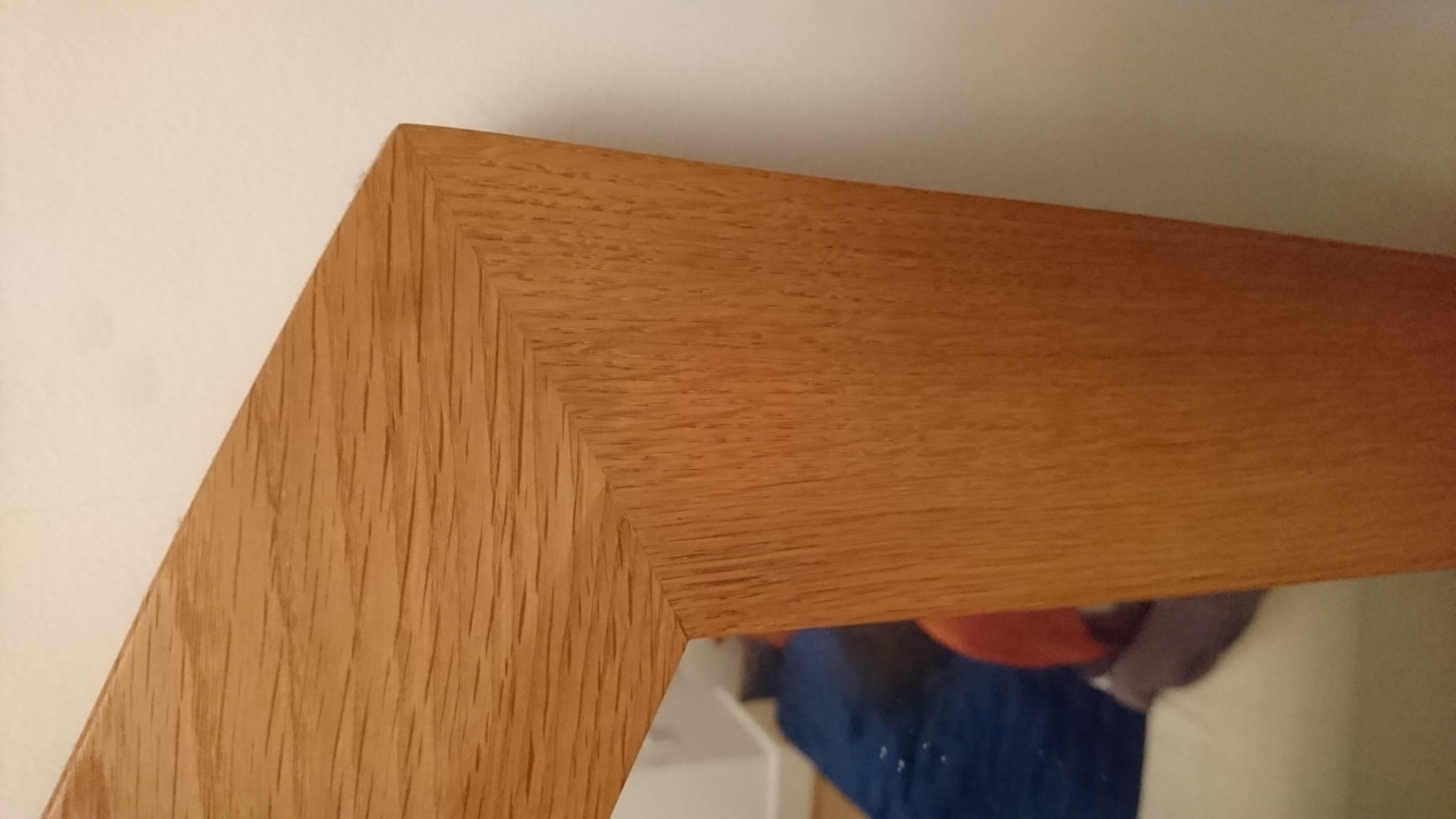
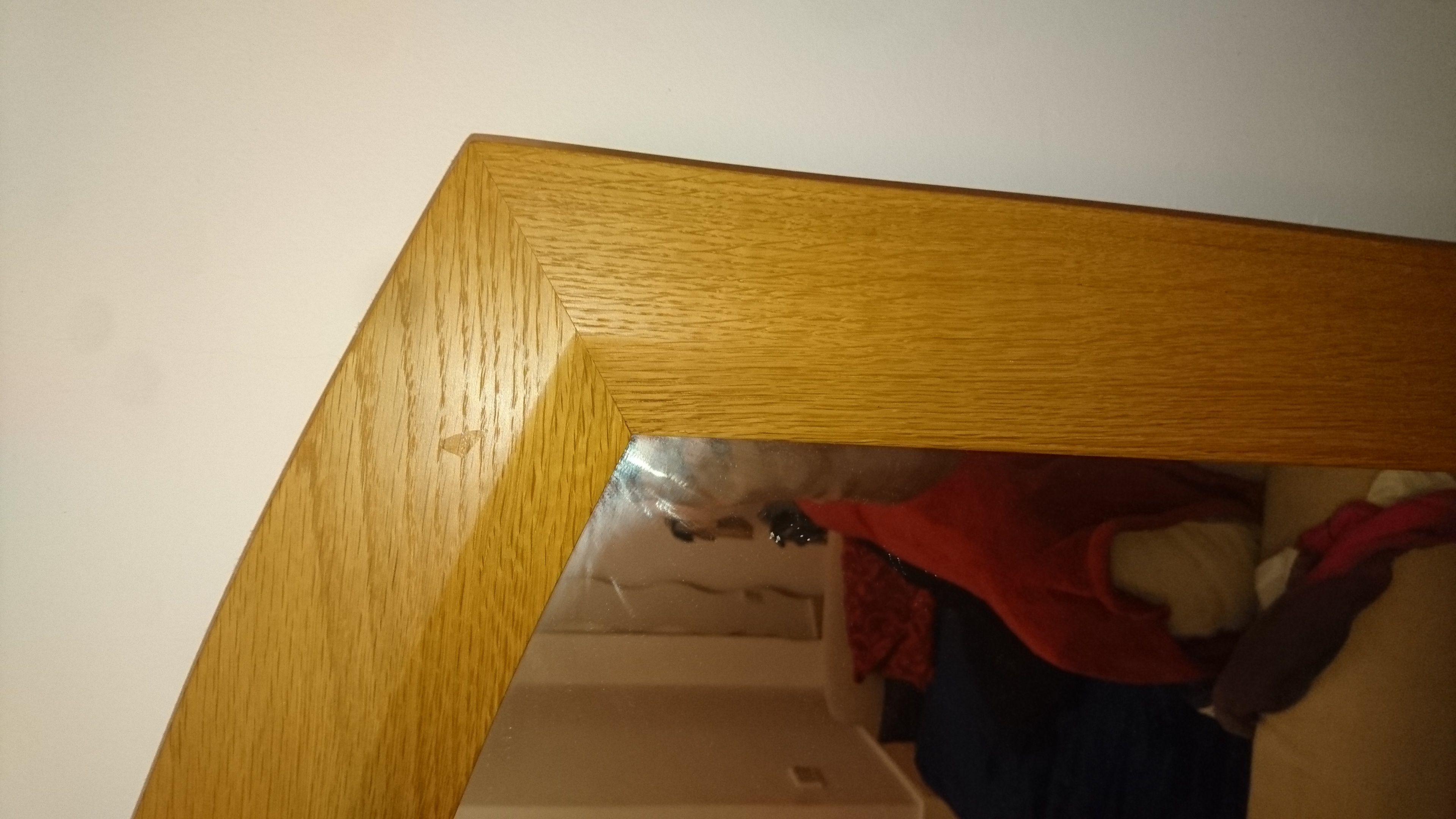

Oak.
Can someone tell me what kind of wood these cabinets are?
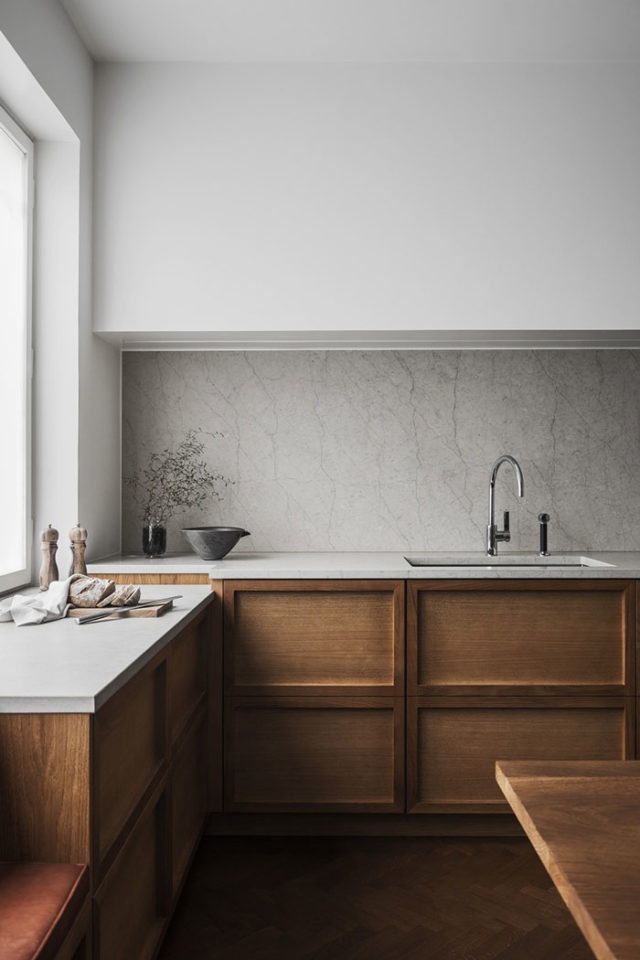
Can’t tell from that distance. The color at least resembles a walnut look.
Any idea on this?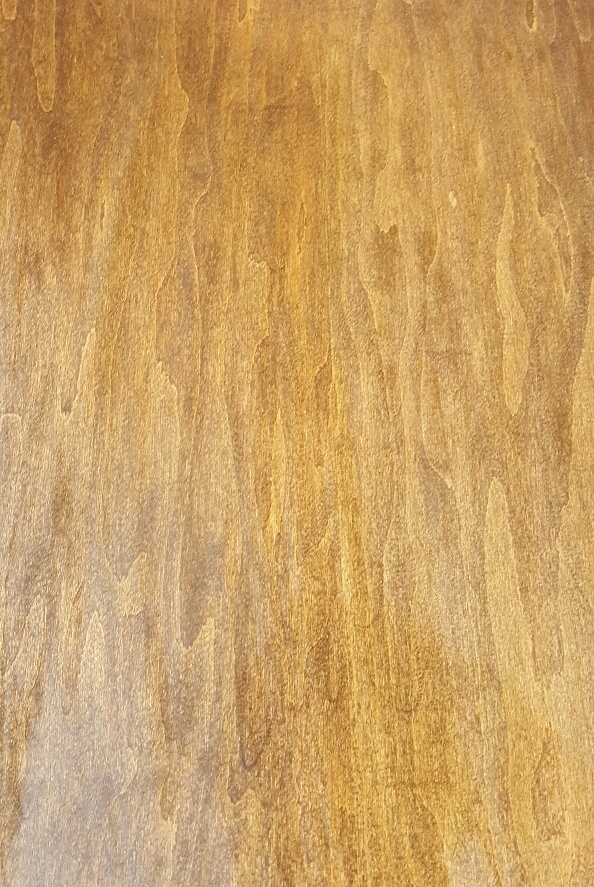
Looks the closest to me like strand-woven bamboo flooring.
I’d love to know what wood this is, can anyone help?
It is an old table top, made by Reynolds of Ludlow, sometime after the 1950s. The wood is pale brown when sanded as shown in the picture, with much lighter sapwood. The darker wood is relatively hard, although not as hard or heavy as oak. The sapwood is much softer, easily scored with a wire brush.
When oiled it comes up a much more orange-red colour, although the sapwood stays about the same colour.
Thanks!
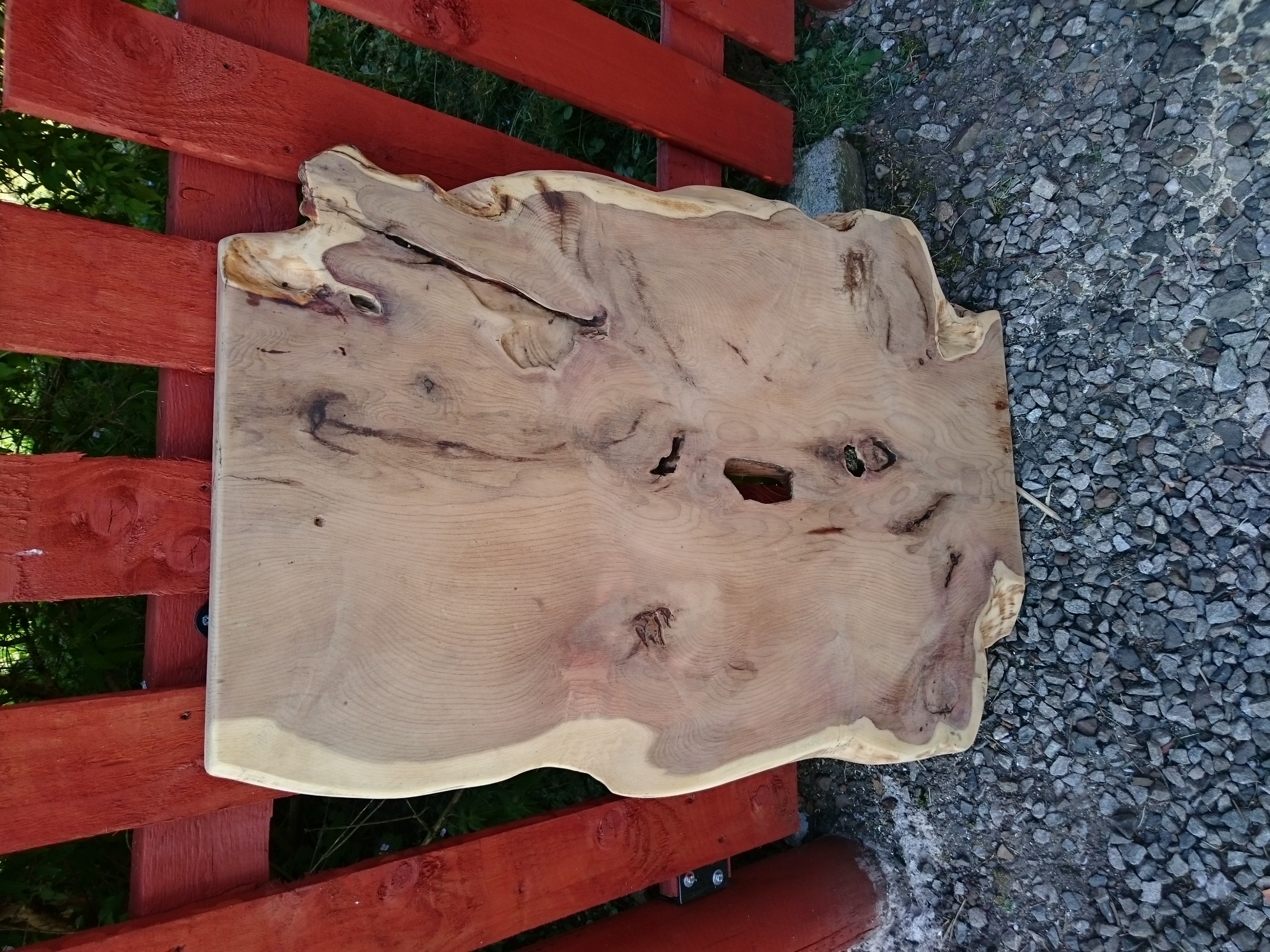
I would need to see a finely sanded closeup picture of the endgrain in order to have a better chance at IDing this wood.
Thanks for the quick reply! A few pictures of the end grain as clear as I can get them below…
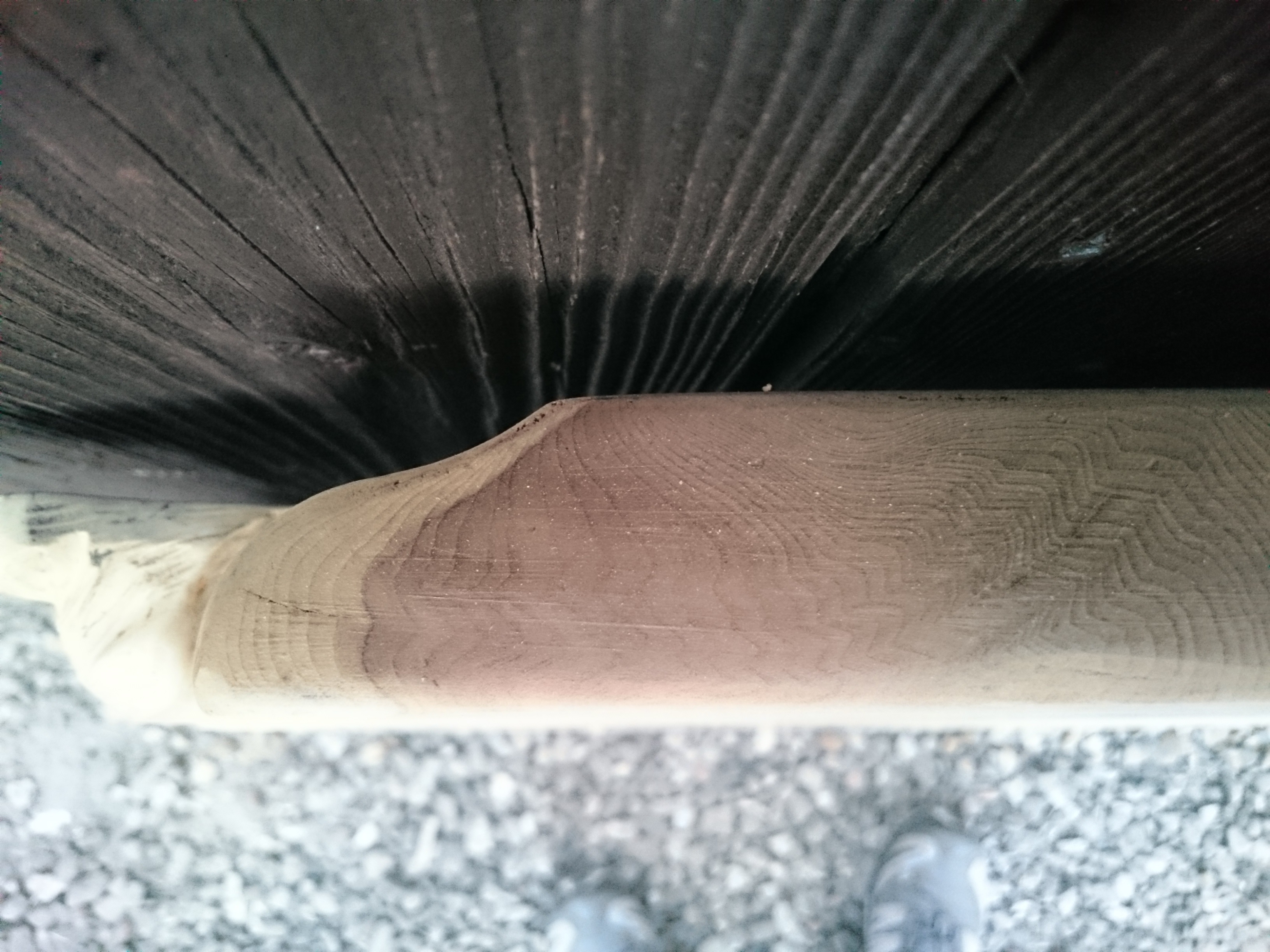
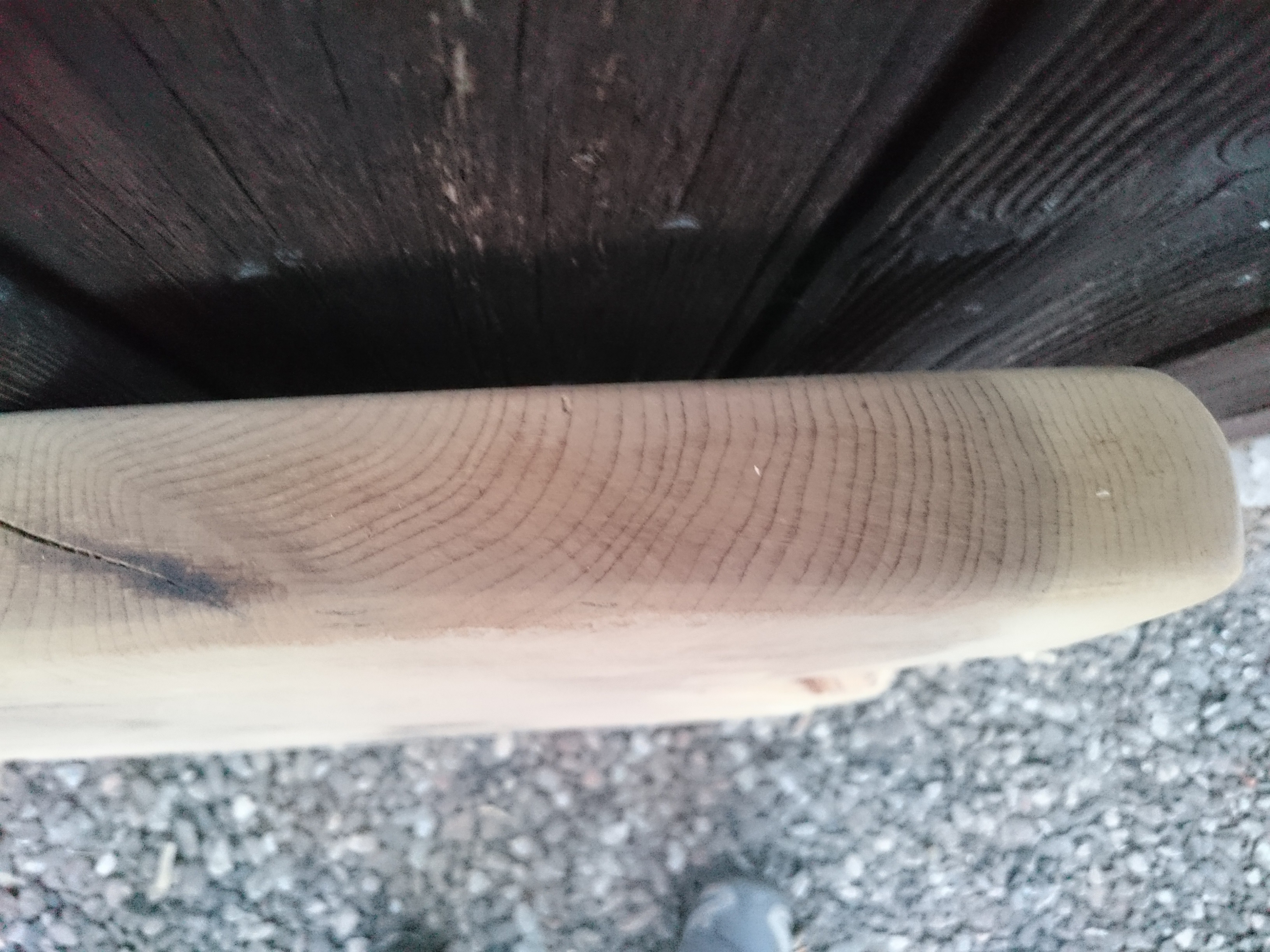
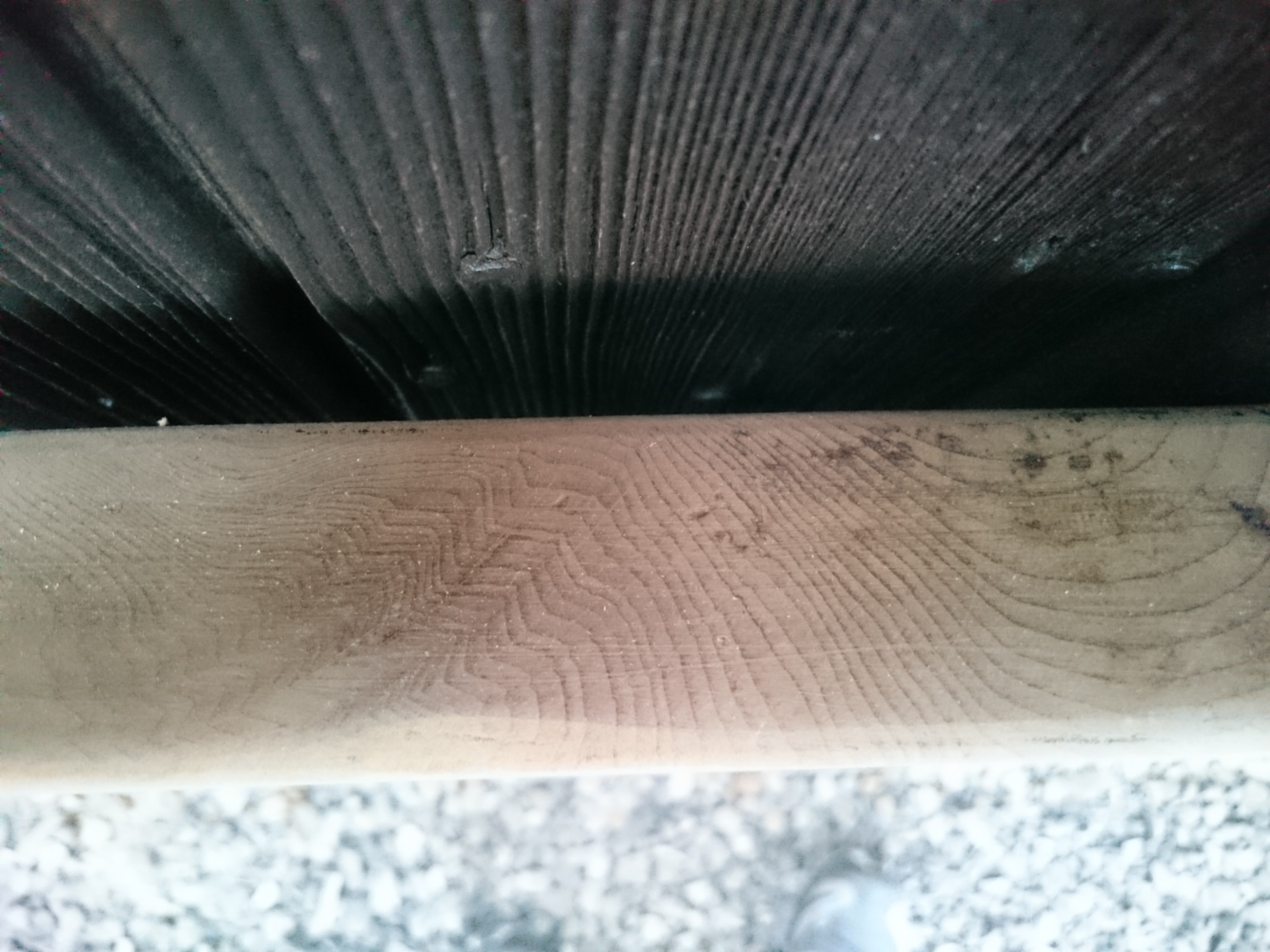
Looks more like a softwood, but still can’t tell. Need to sand it to at least 200 or 300 grit, and then get a closeup in direct sunlight, basically as close as your camera (or phone) is capable of focusing.
HI CAN SOMEONE TELL ME WHAT WOOD TYPE THIS IS ? ITS BEEN SANDED DOWN FOR A RESTORATION PROJECT,LOOKS SOLID BUT NOT SURE WHAT.
Can anyone tell me what this furniture is made of. My uncle sold it to me recently. He bought at an auction. He thought it was mesquite, but I think it may be pecan. I cut a hole in the back to run wires and the wood is probably just as hard as hickory. It also kind of reminds me of a cedar elm that recently died from drought. I took a pic under one of the shelves where it wasn’t stained.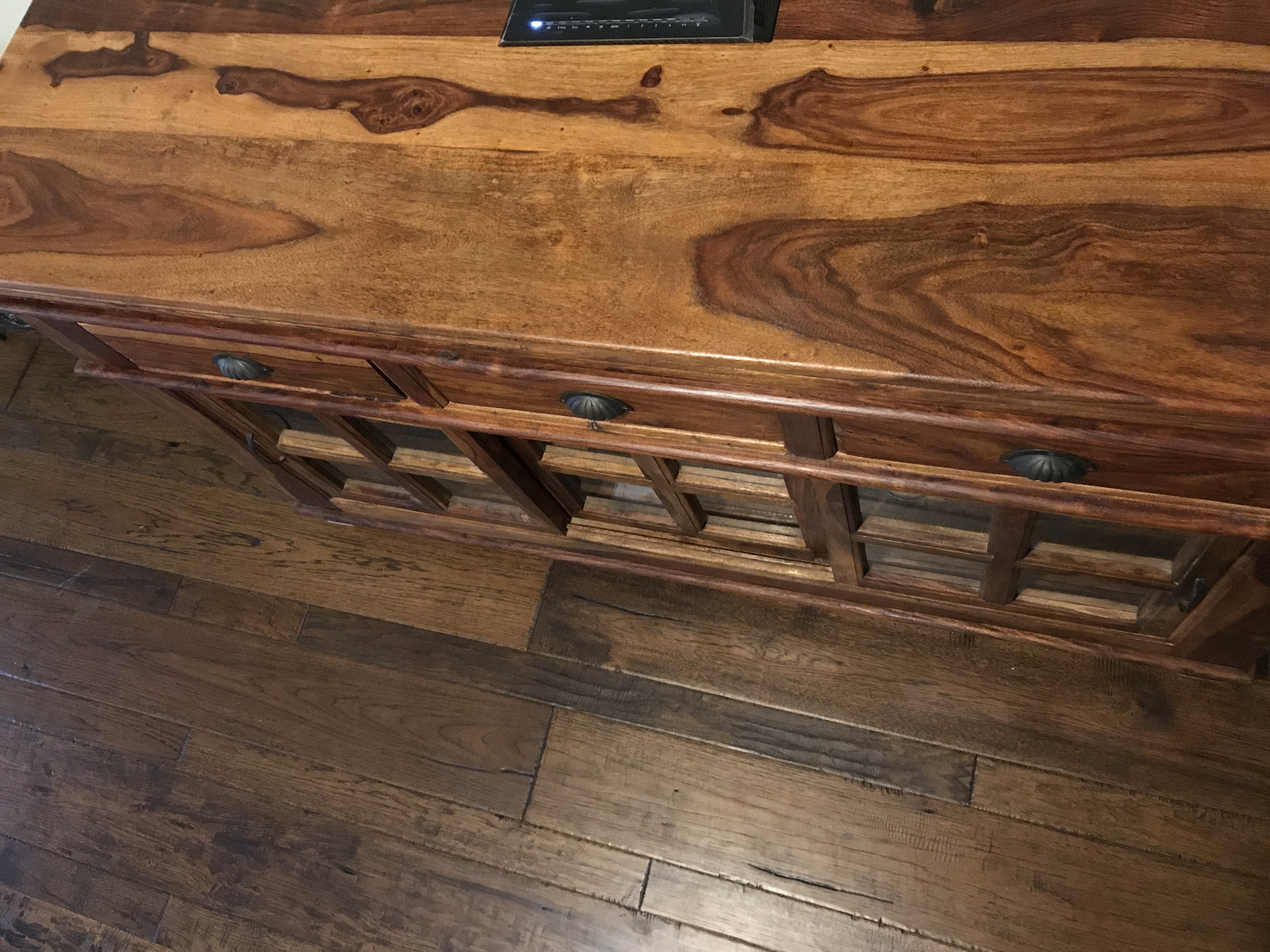 https://uploads.disquscdn.com/images/1c4fa07e214d3dfd3e871617b951857c083fa8dac0c506620ca9e0b23a0ef0b0
https://uploads.disquscdn.com/images/1c4fa07e214d3dfd3e871617b951857c083fa8dac0c506620ca9e0b23a0ef0b0
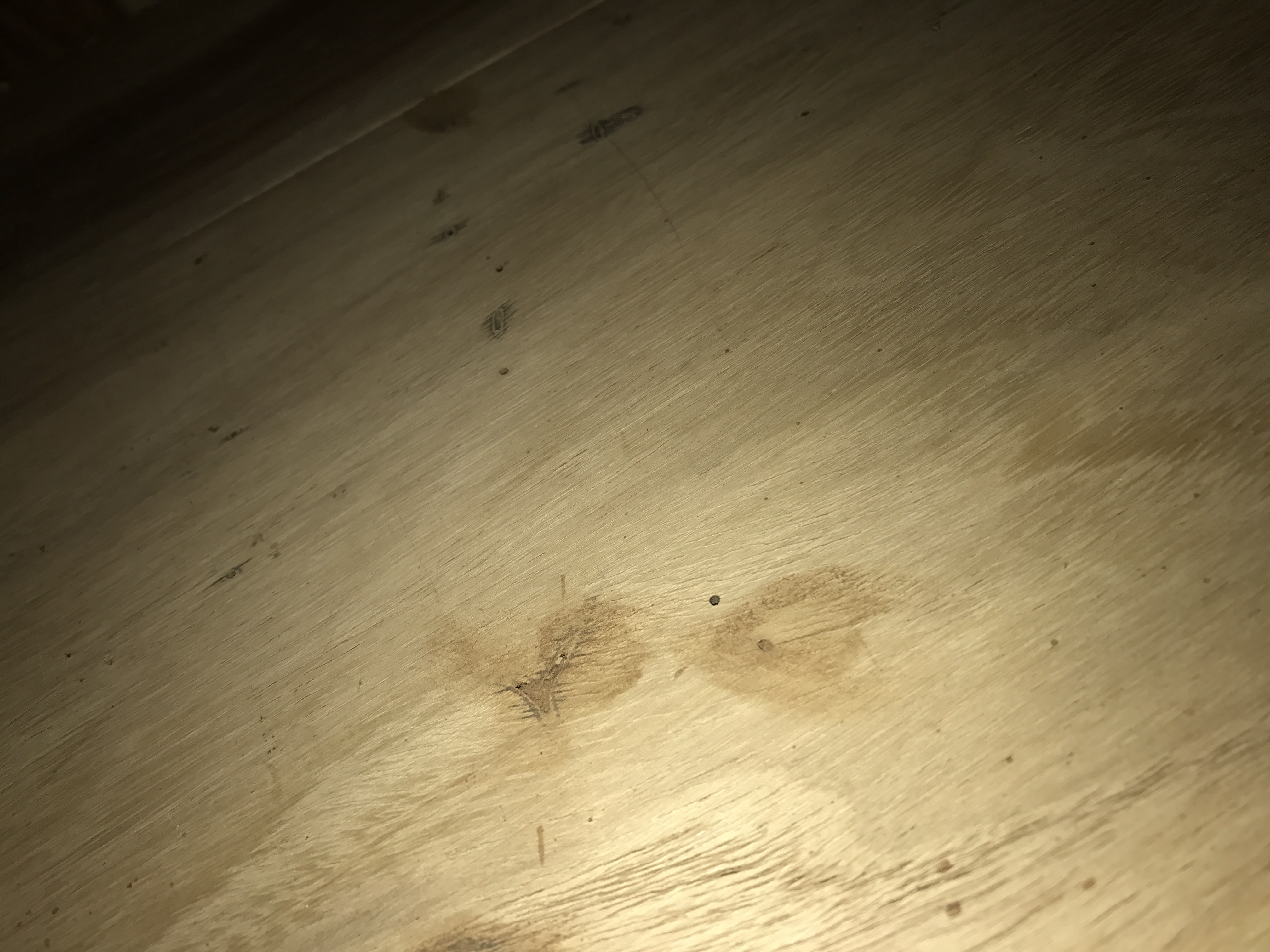
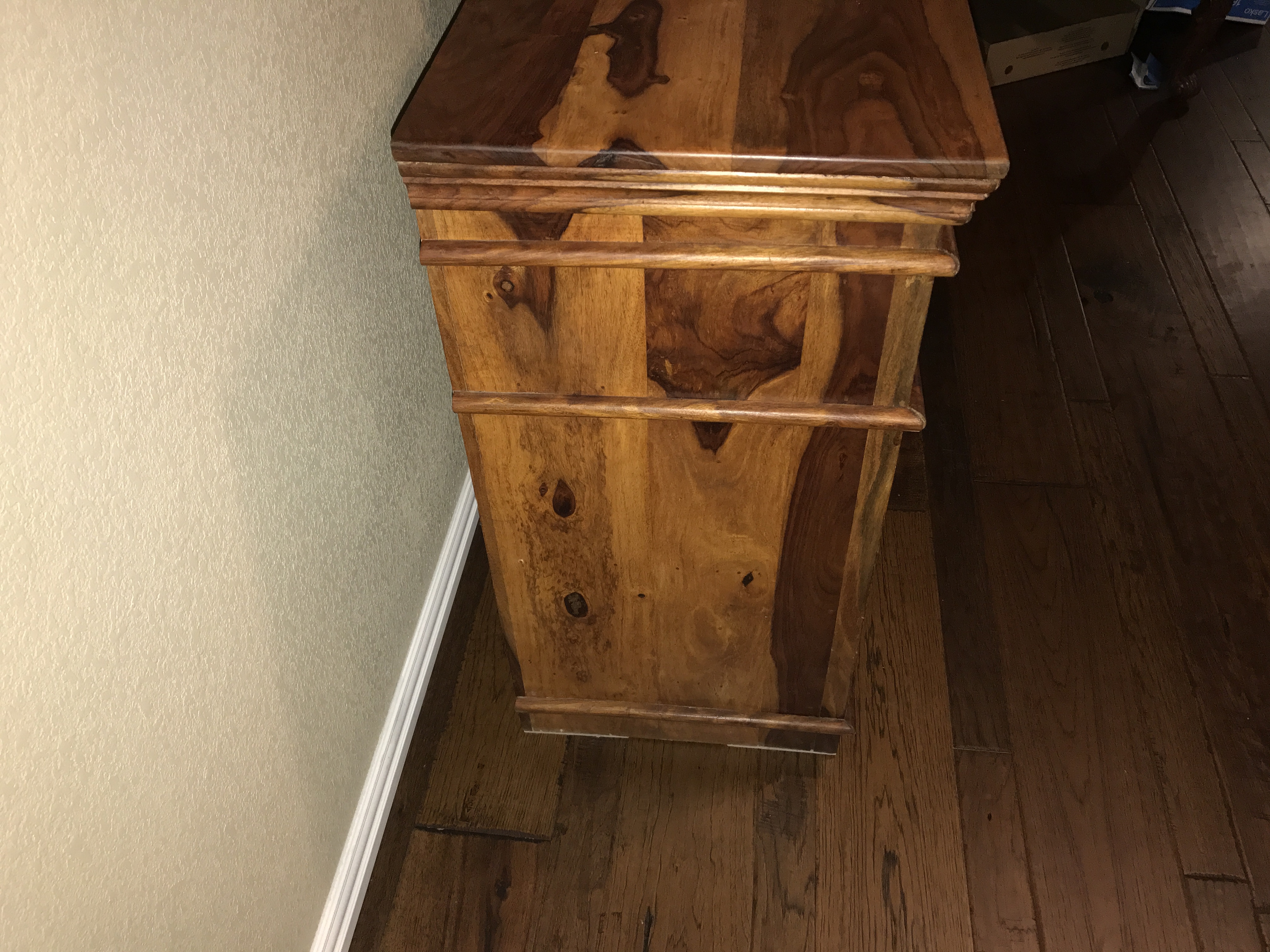 .jpg
.jpg
I would need to see a finely sanded closeup shot of the endgrain to be able to have a shot getting a tentative ID.